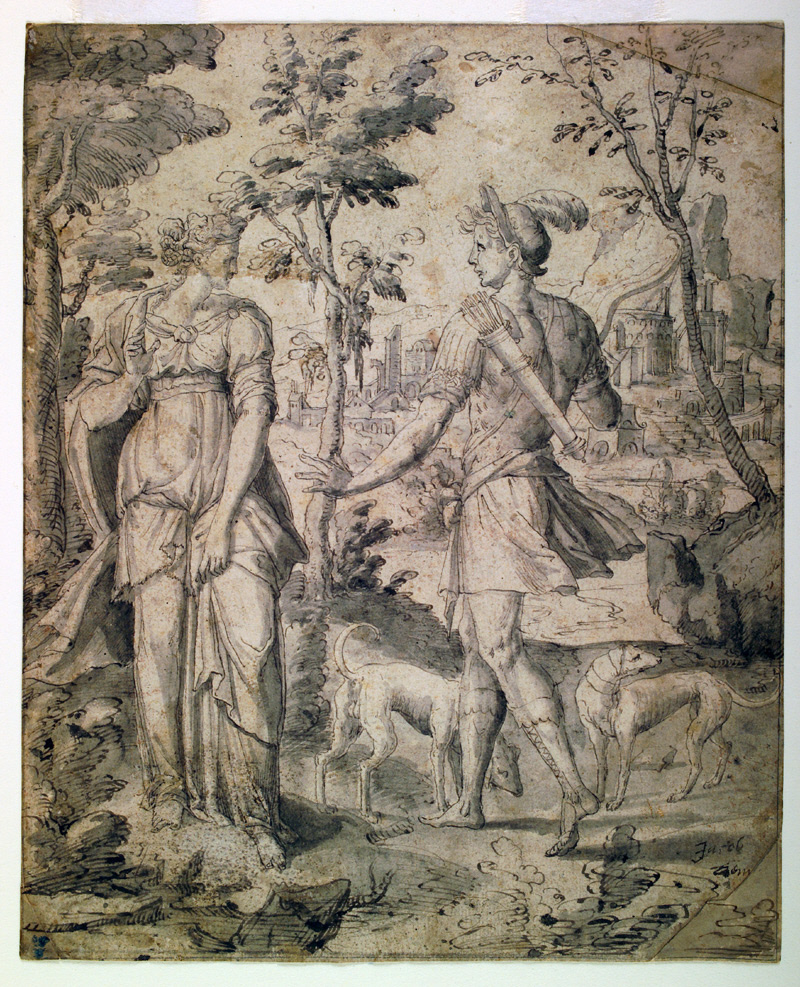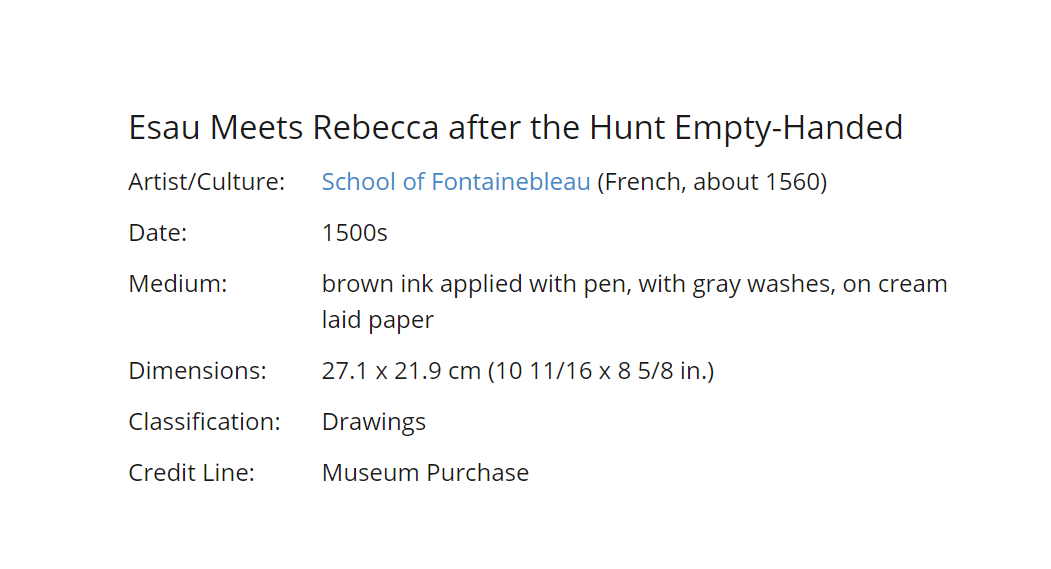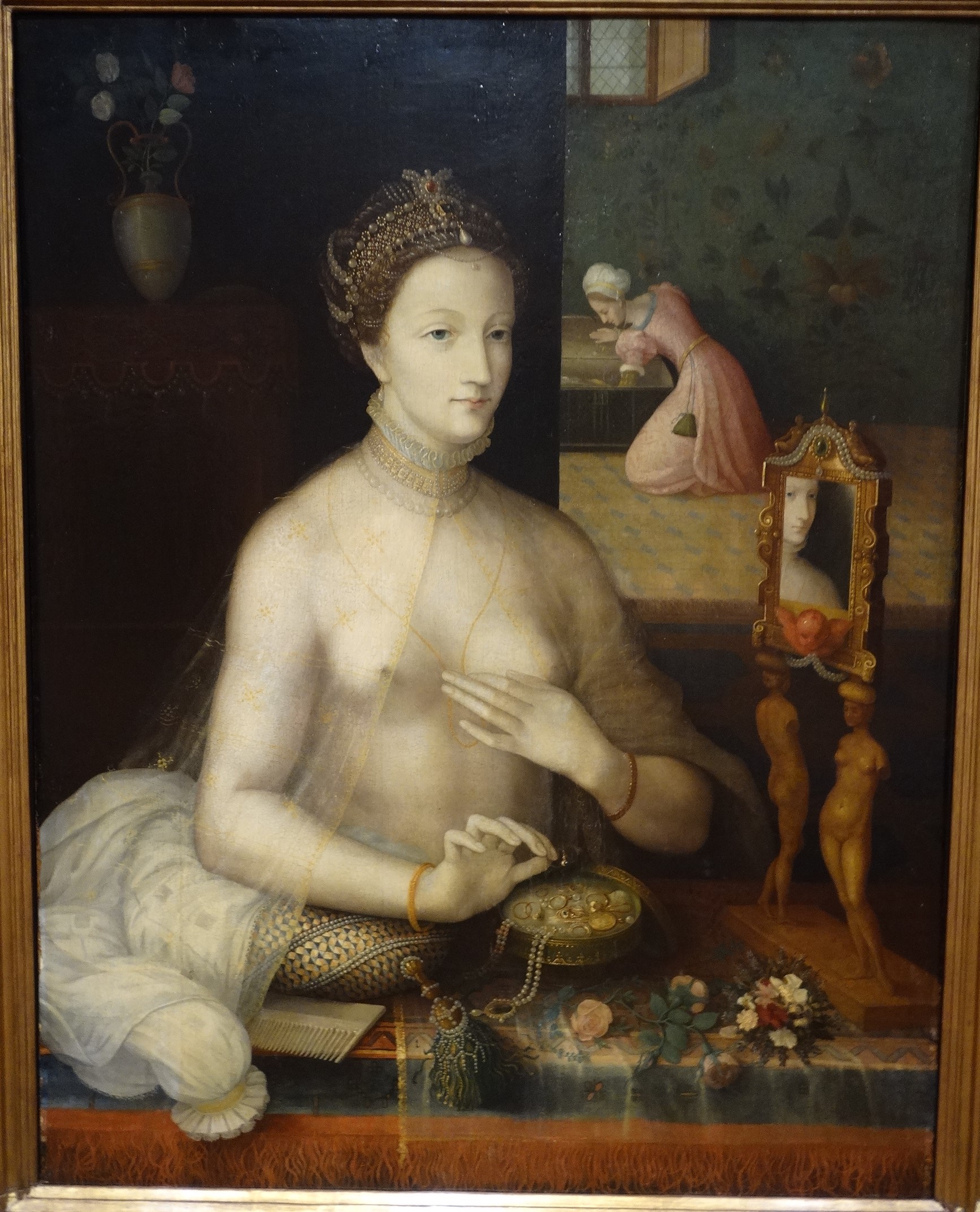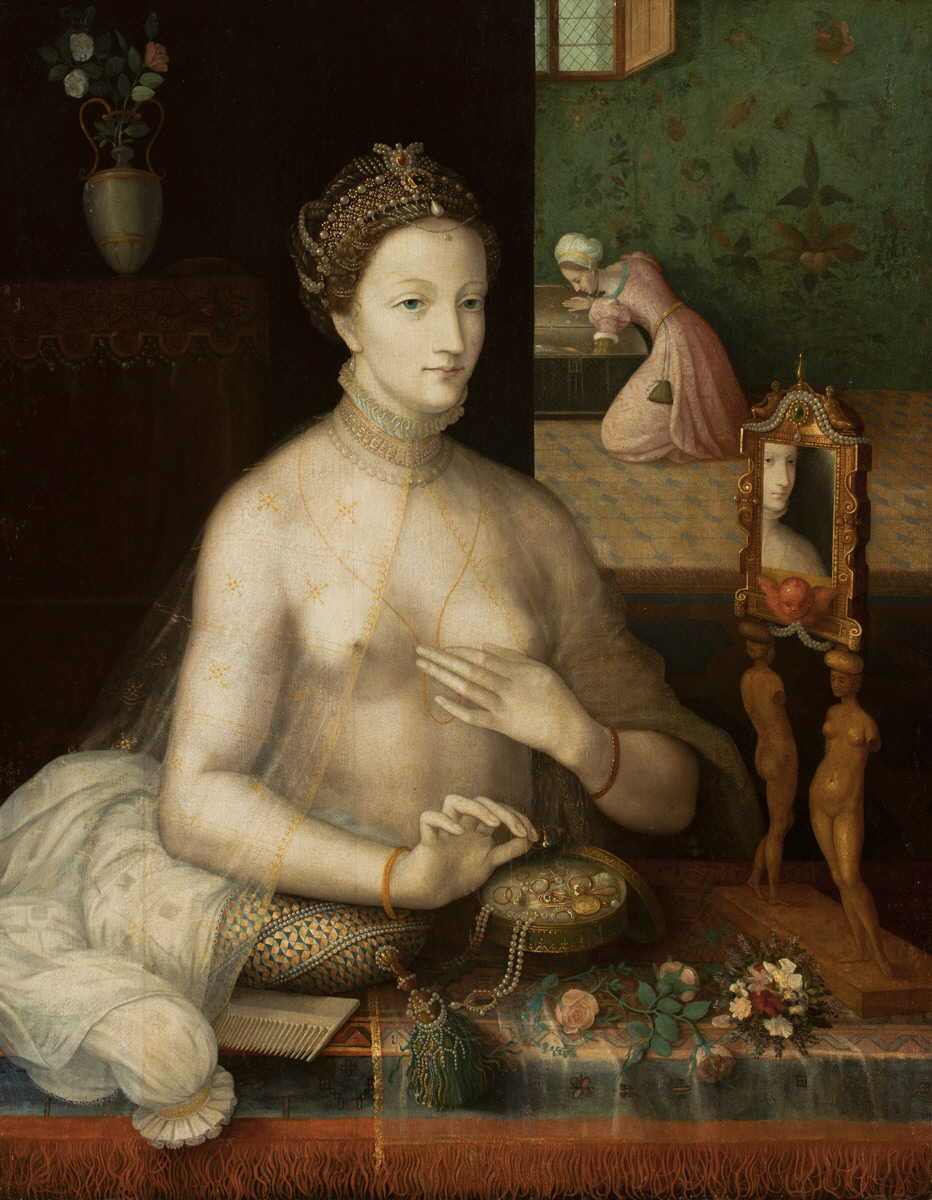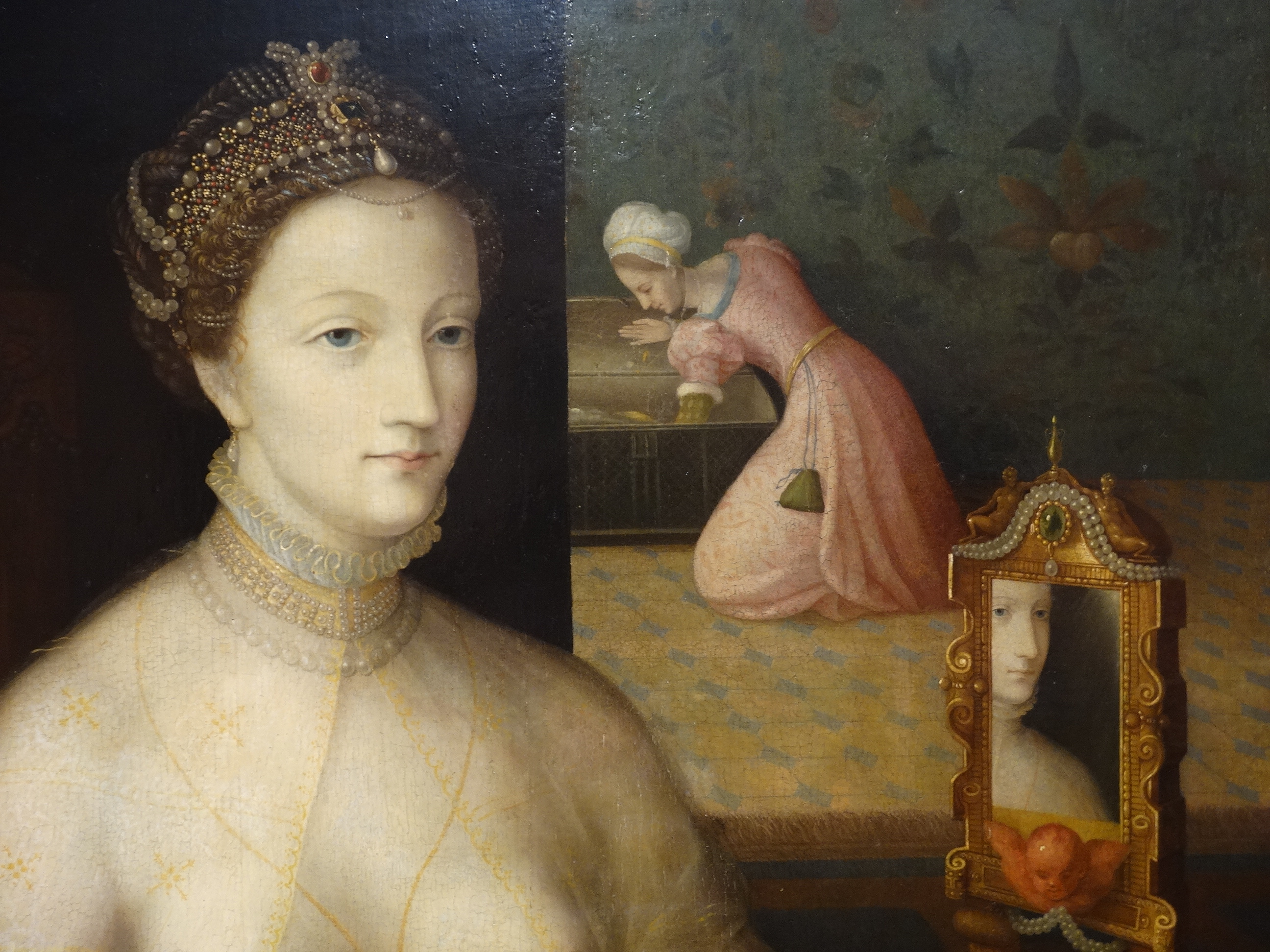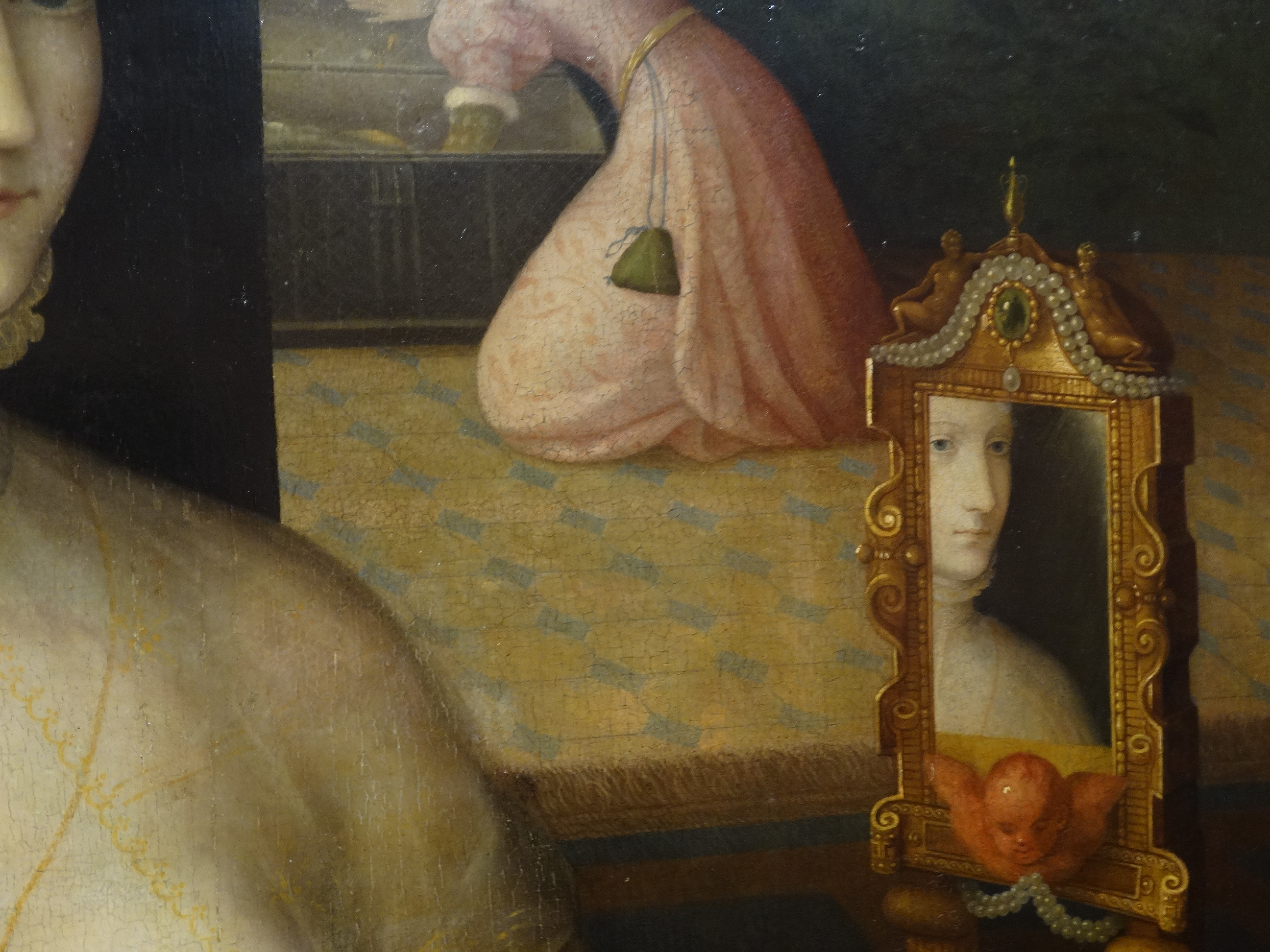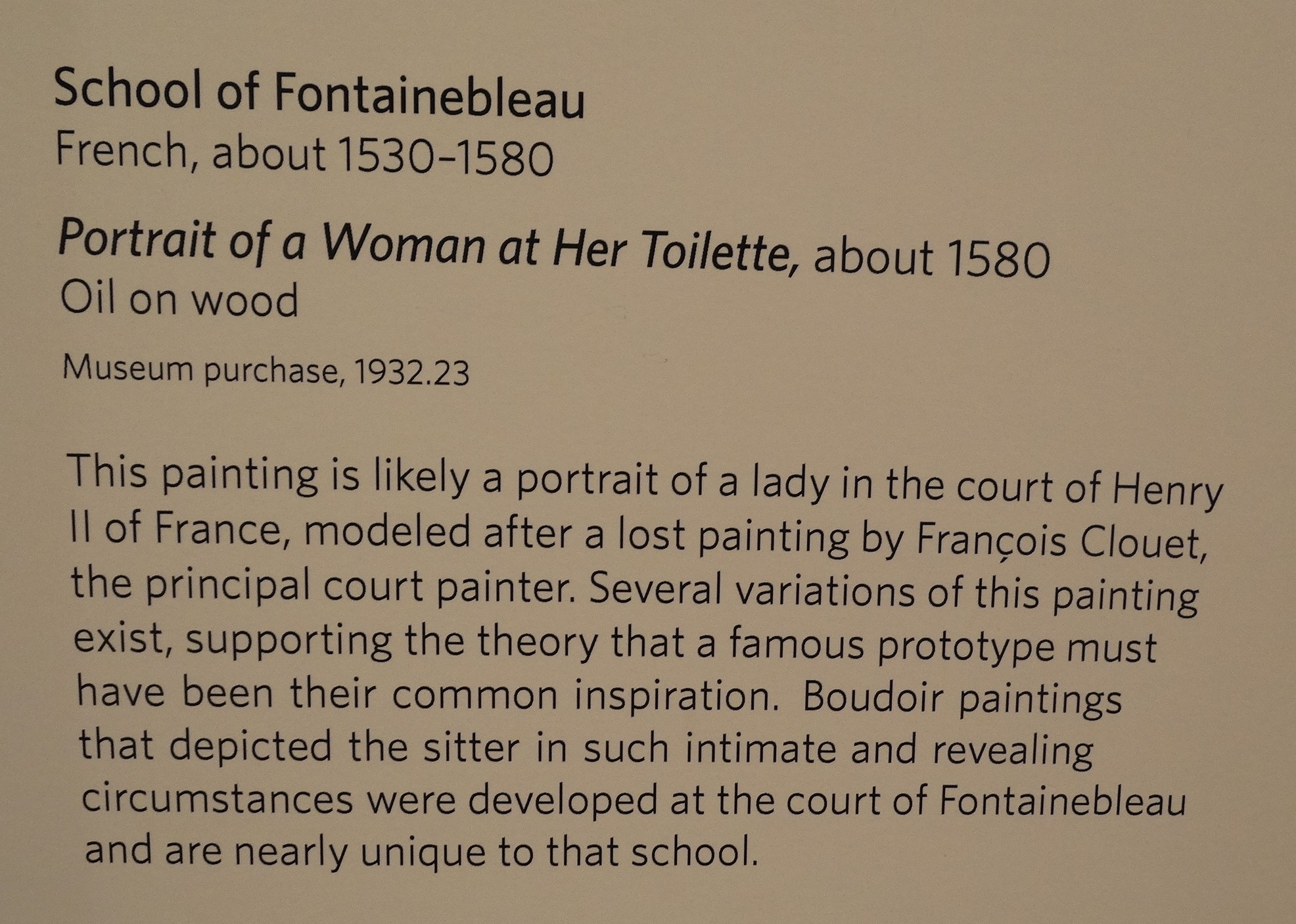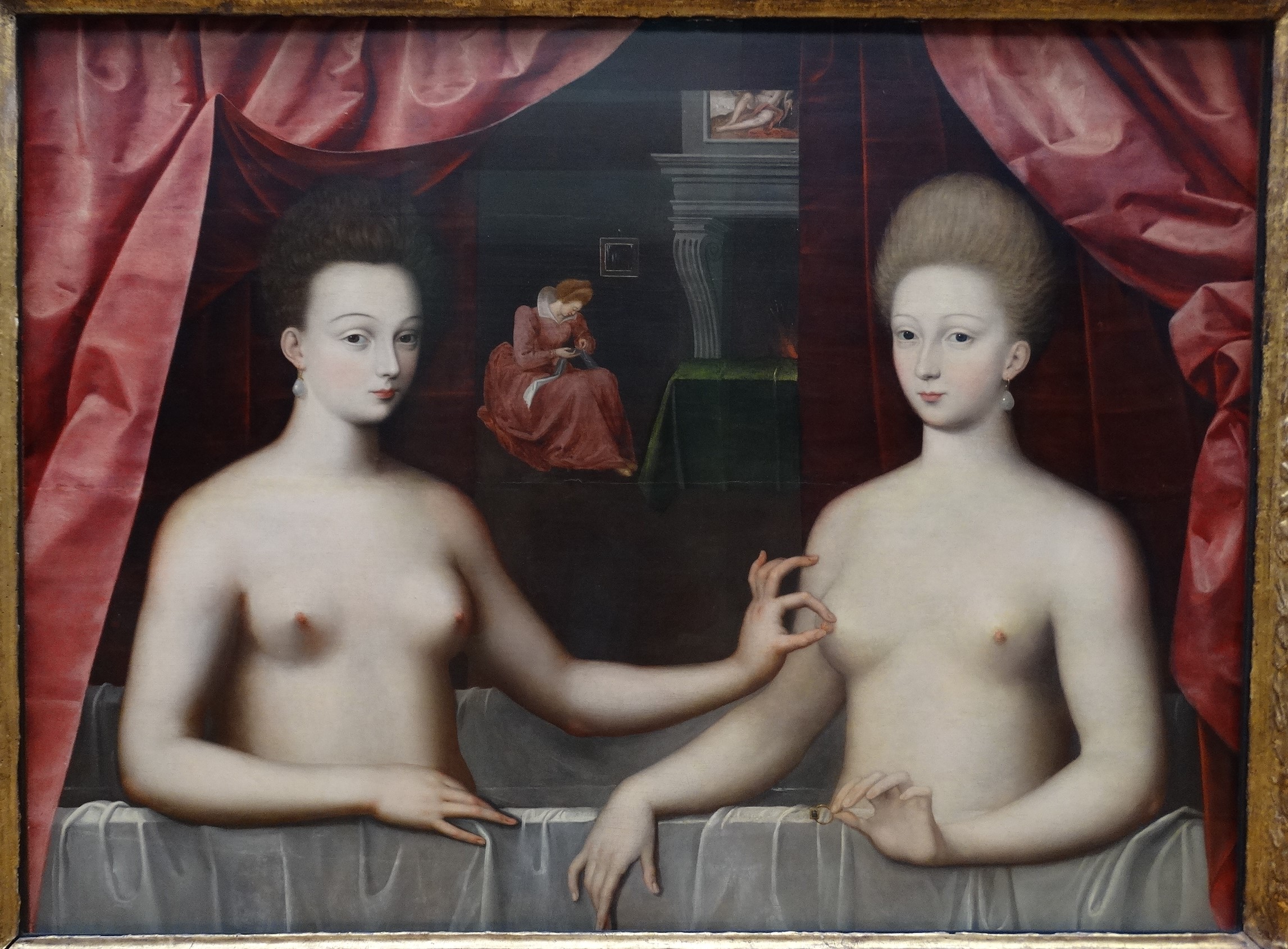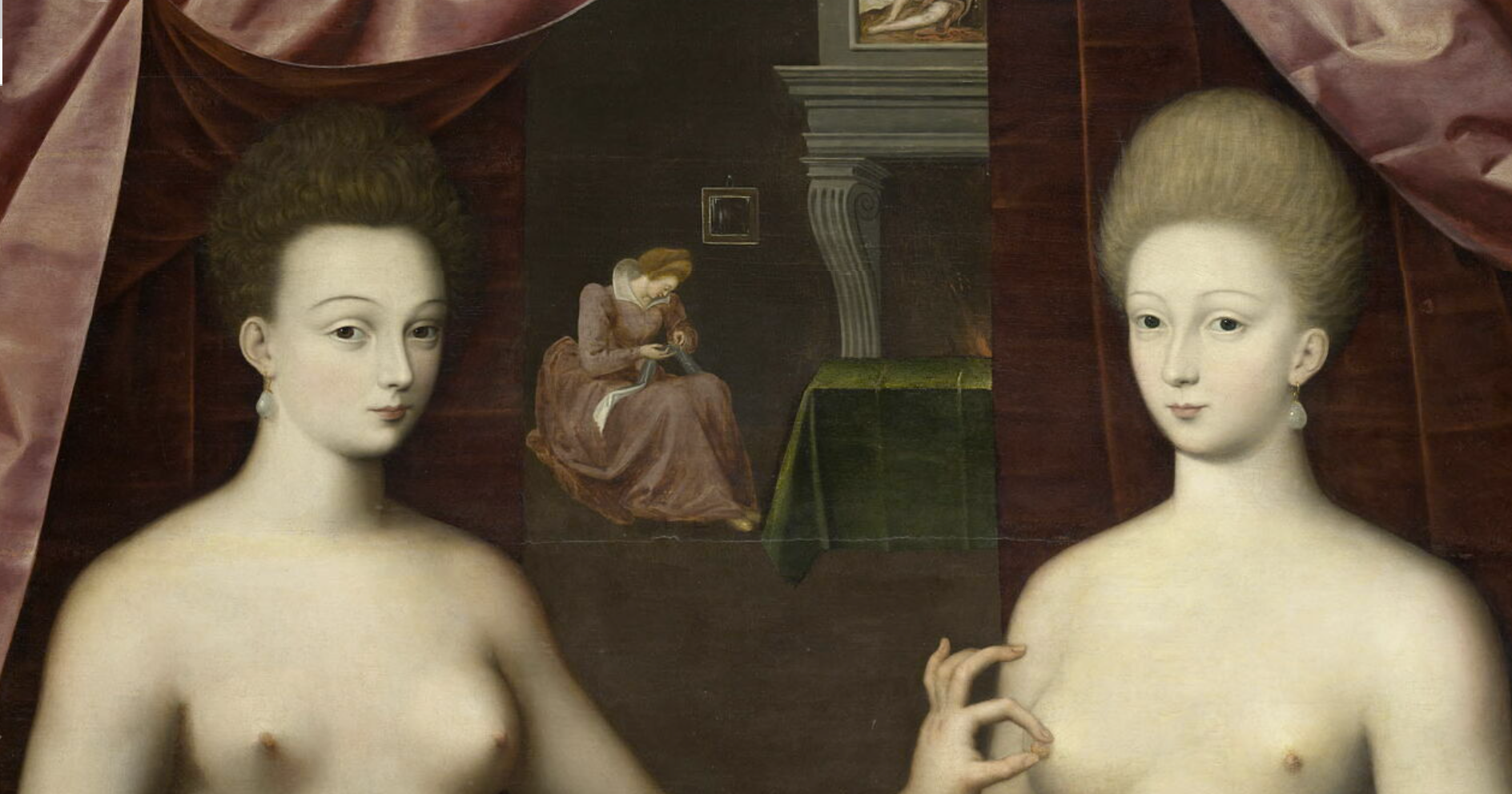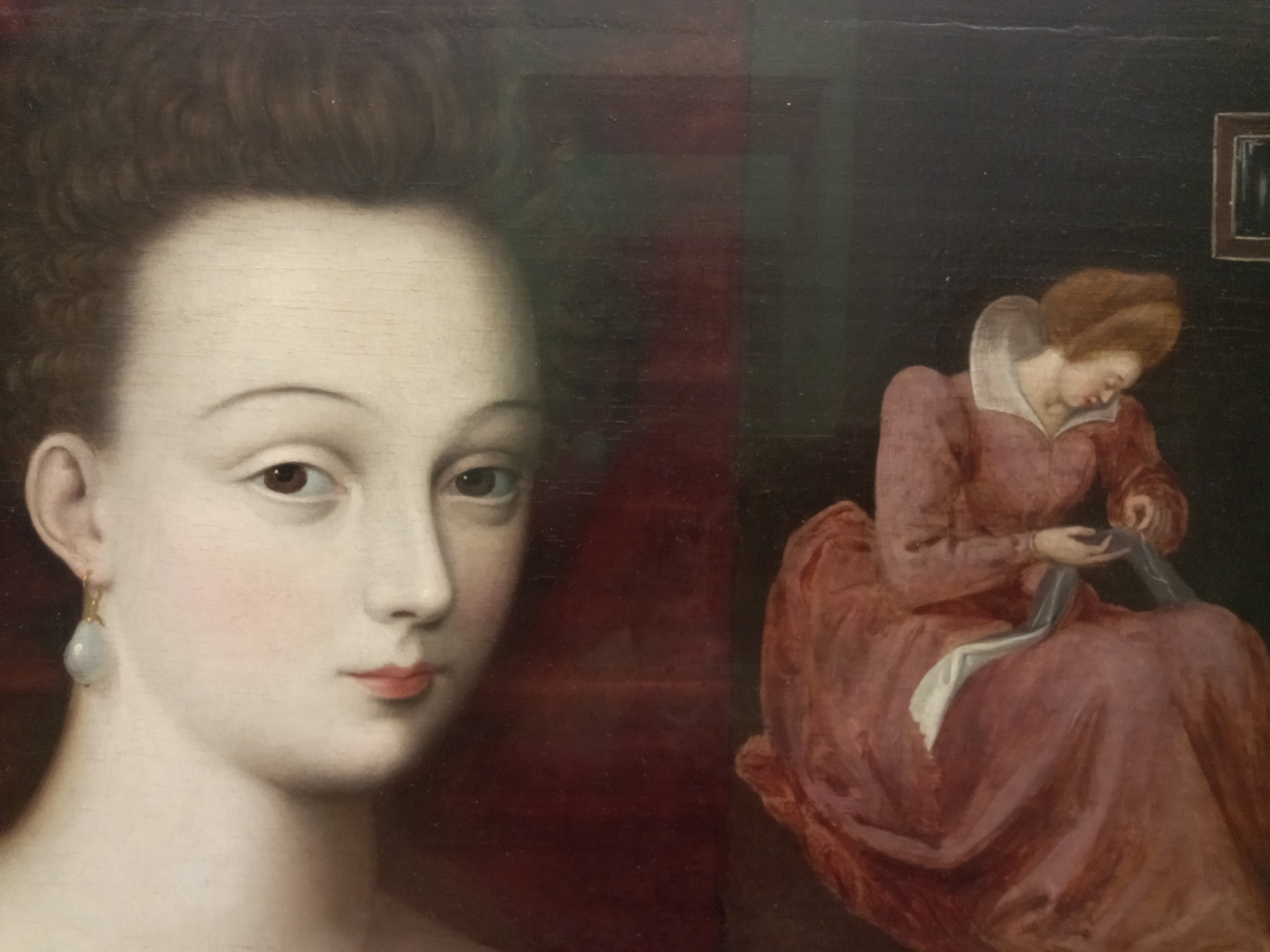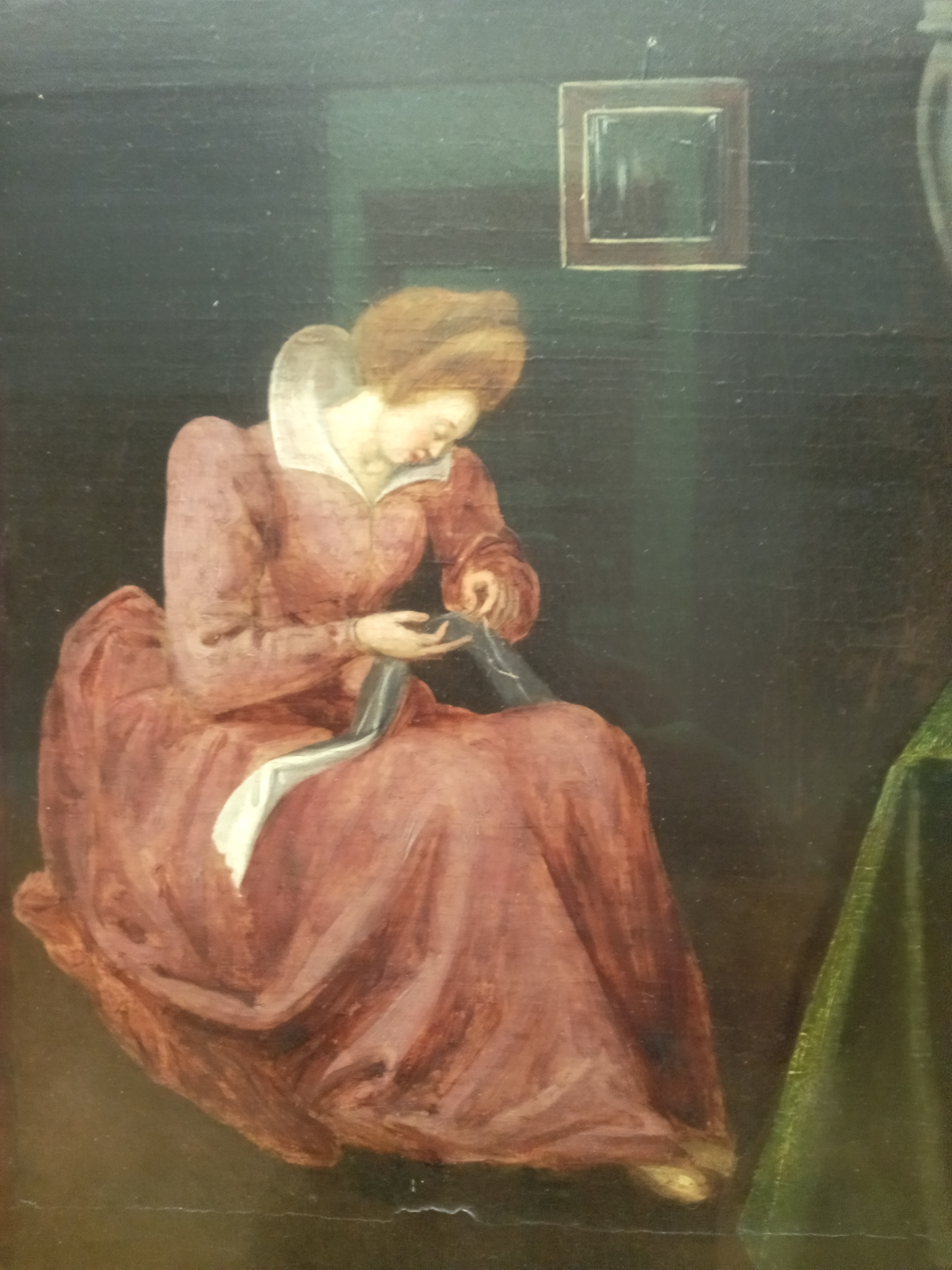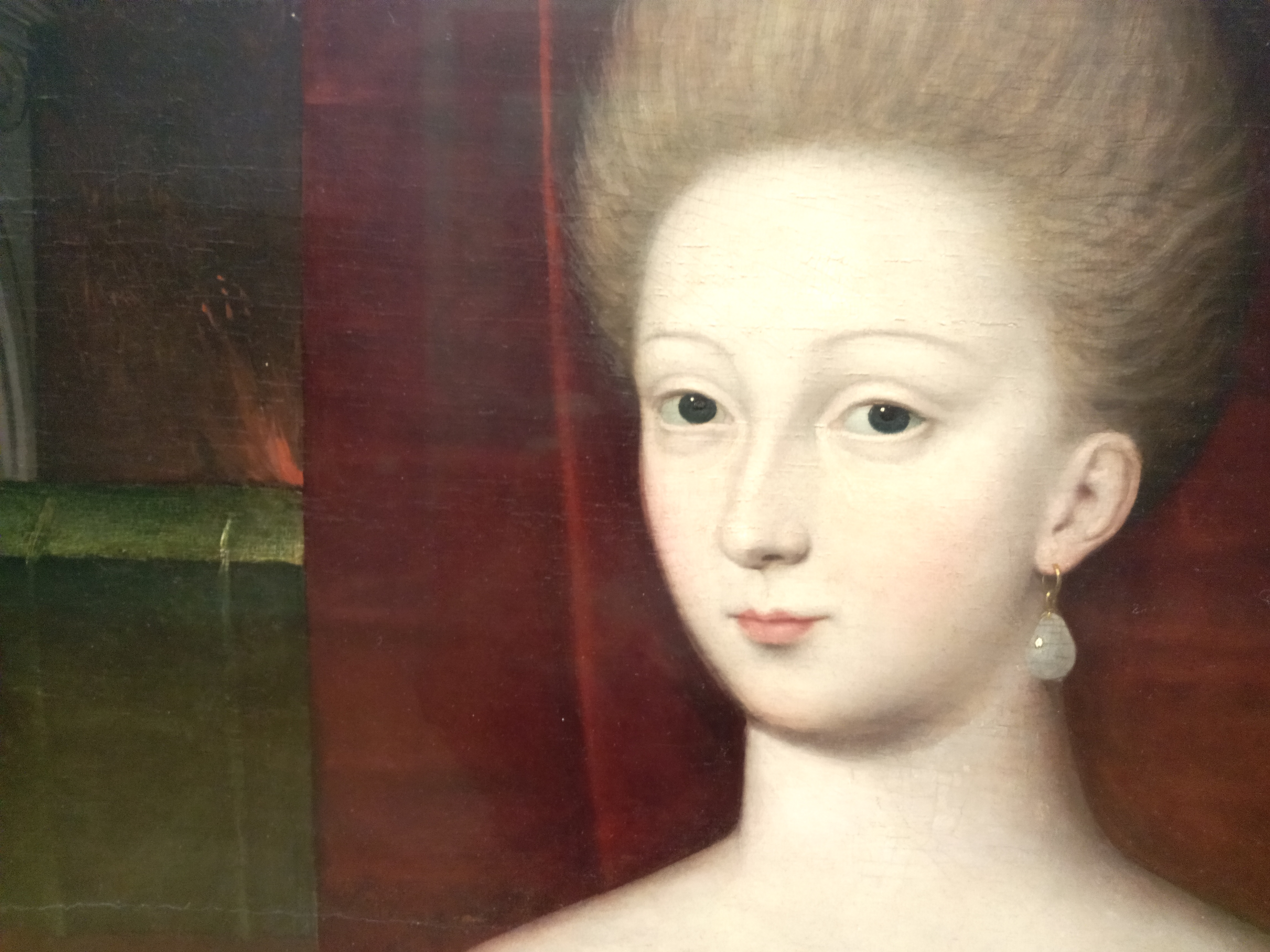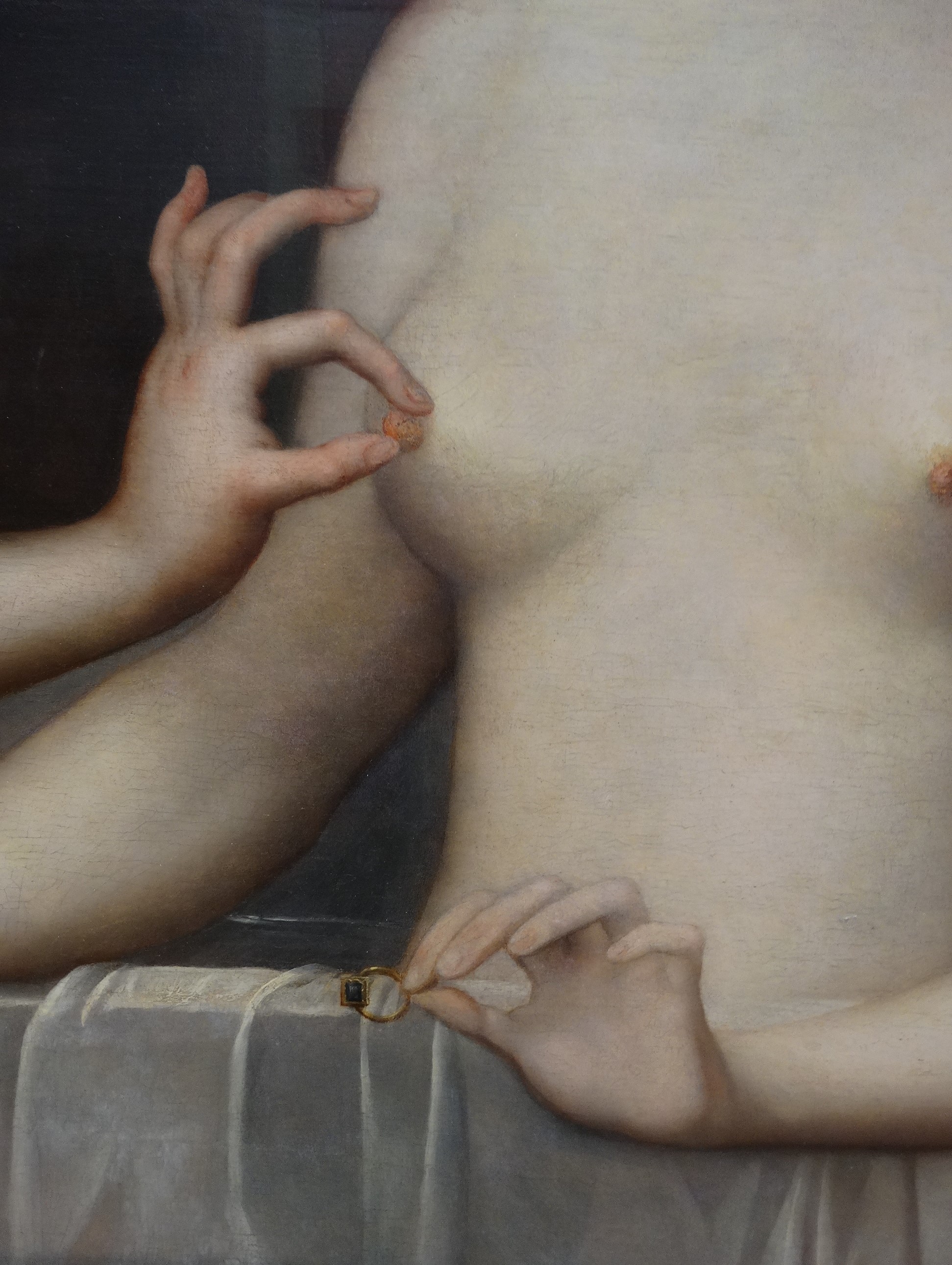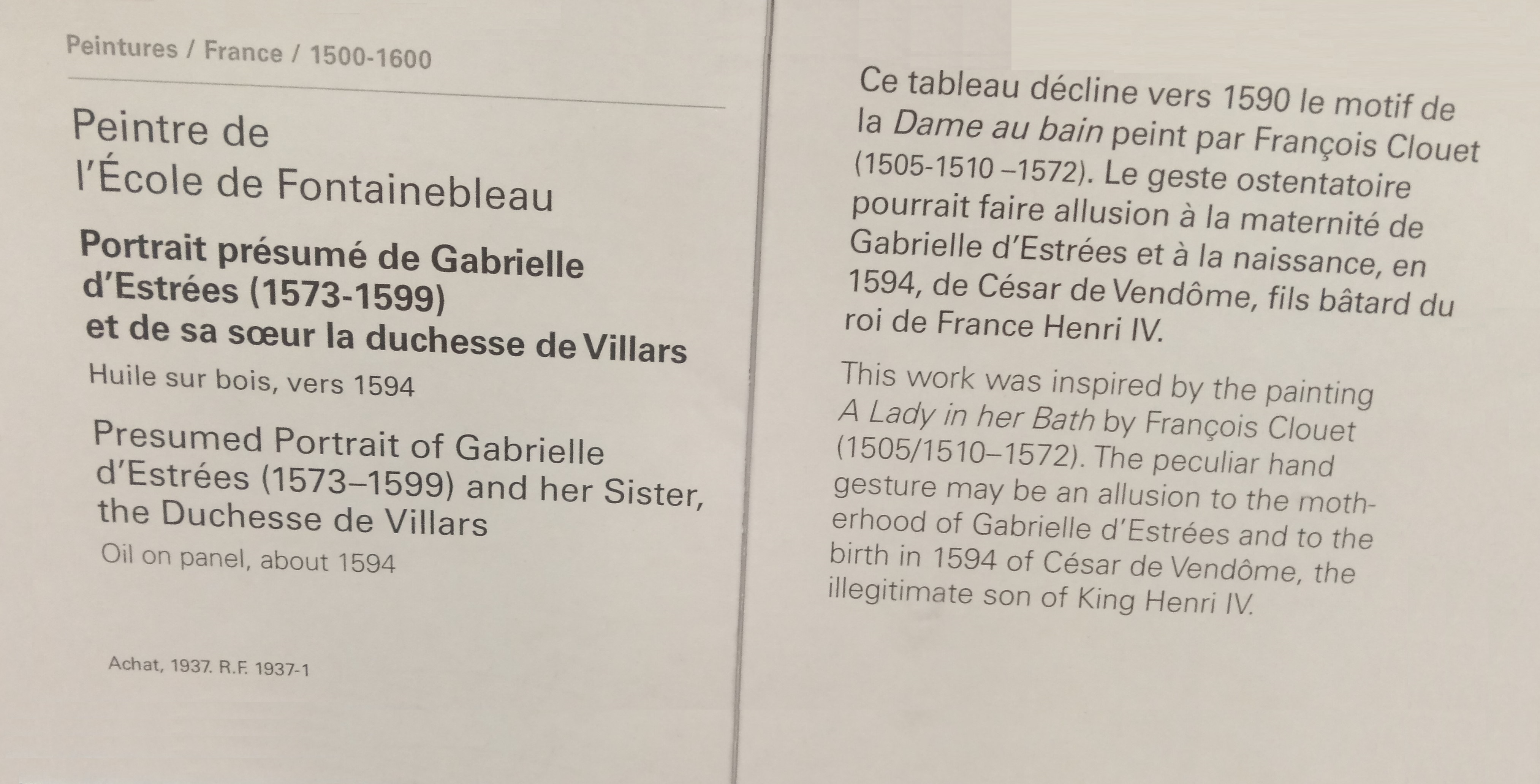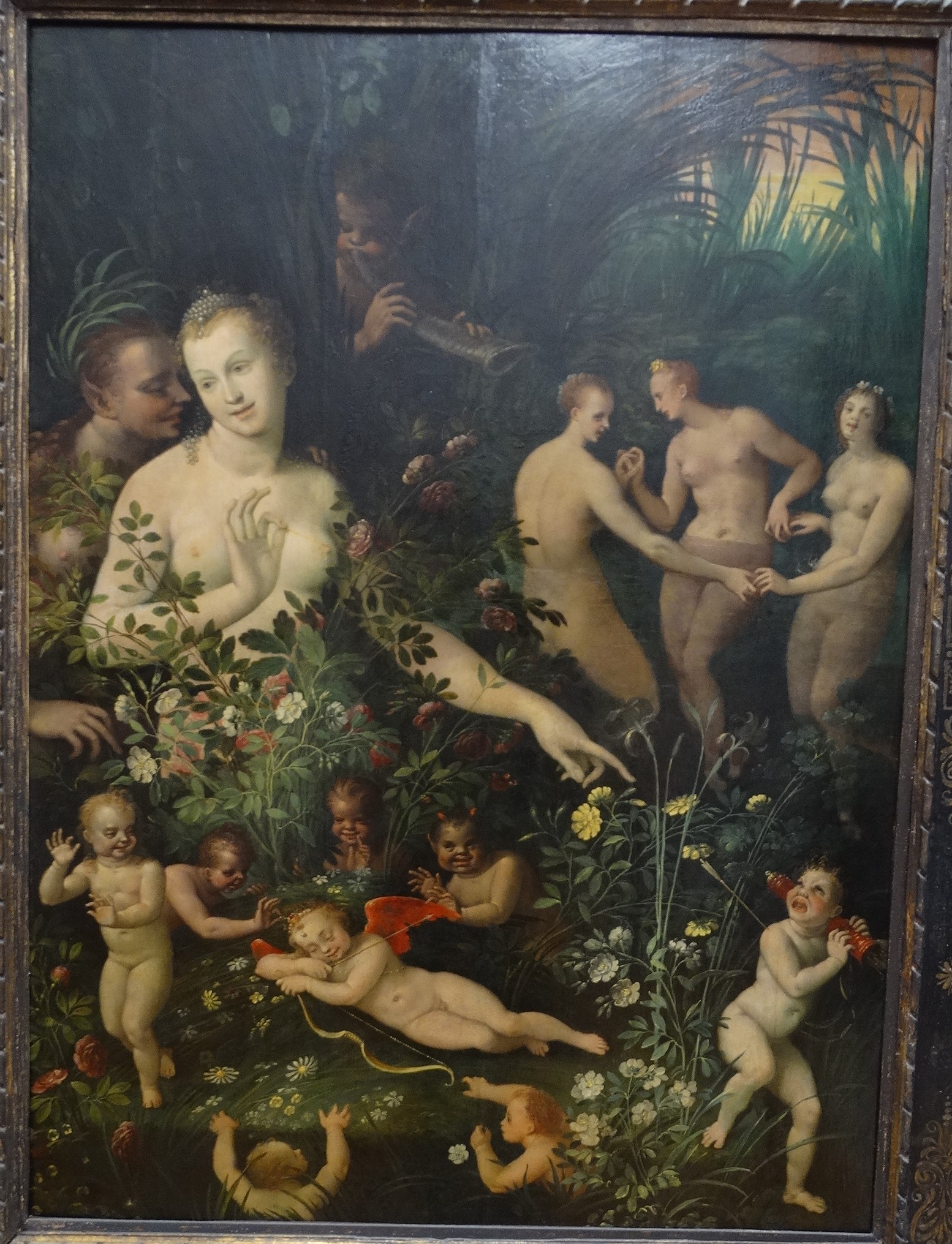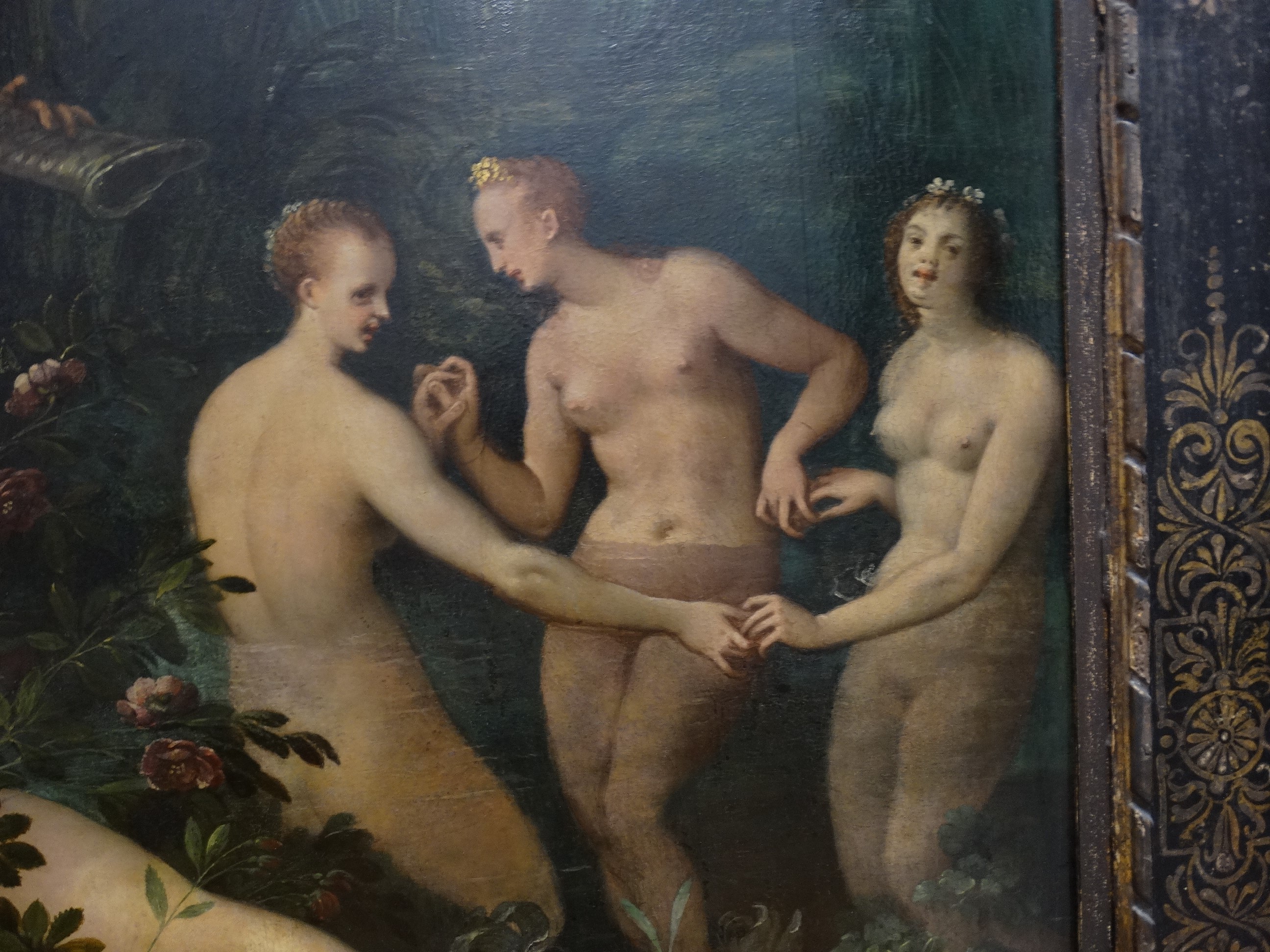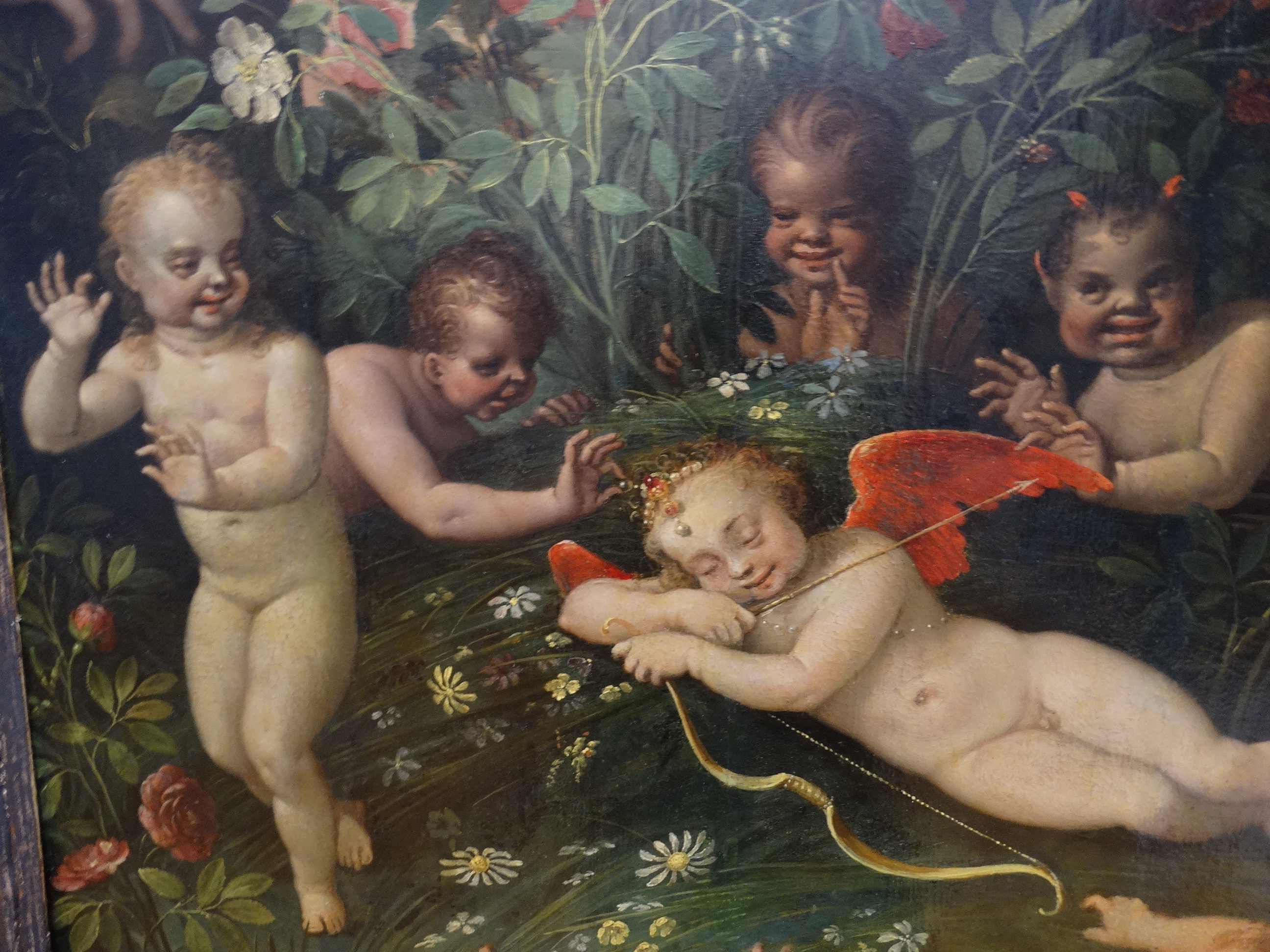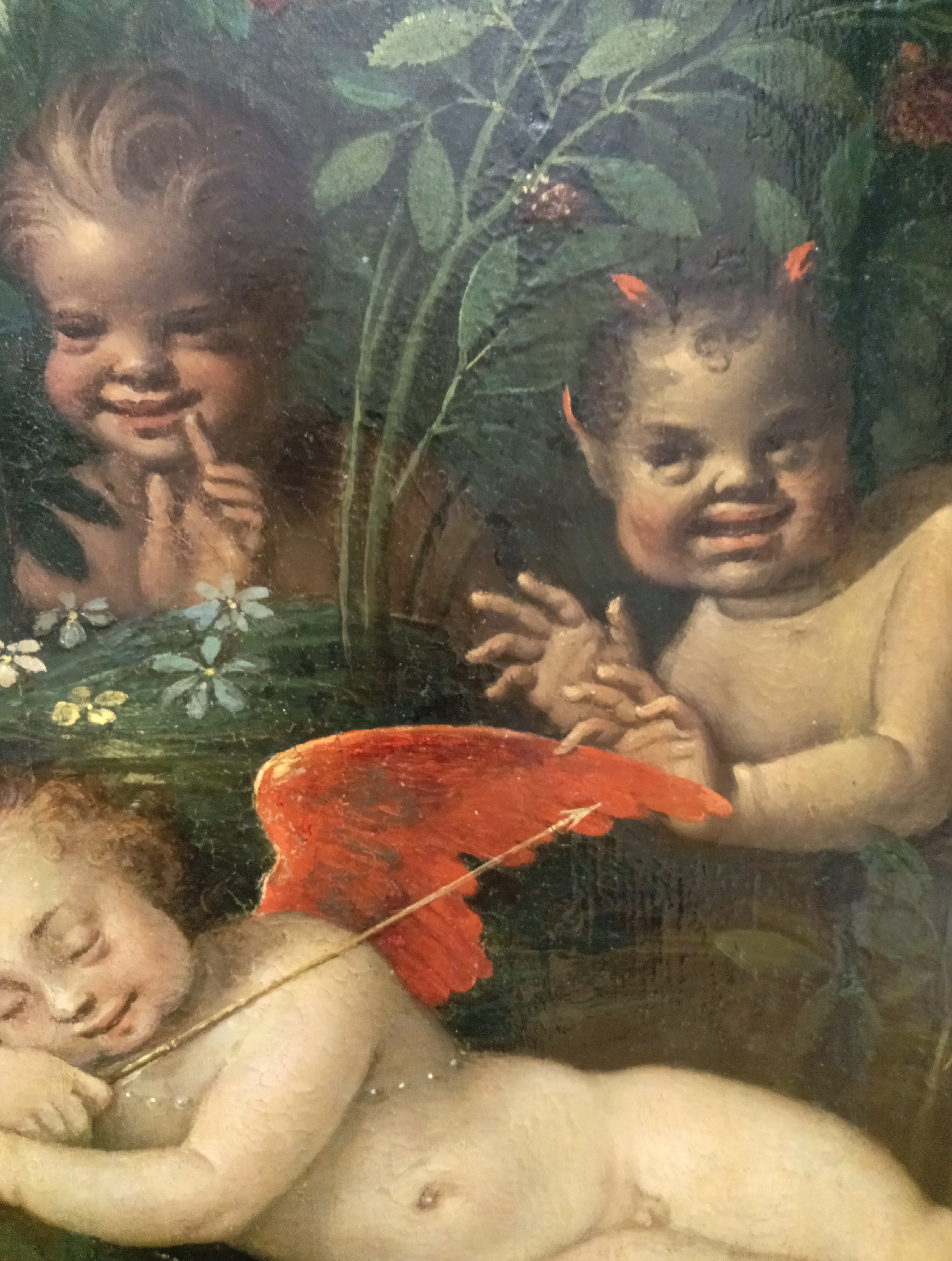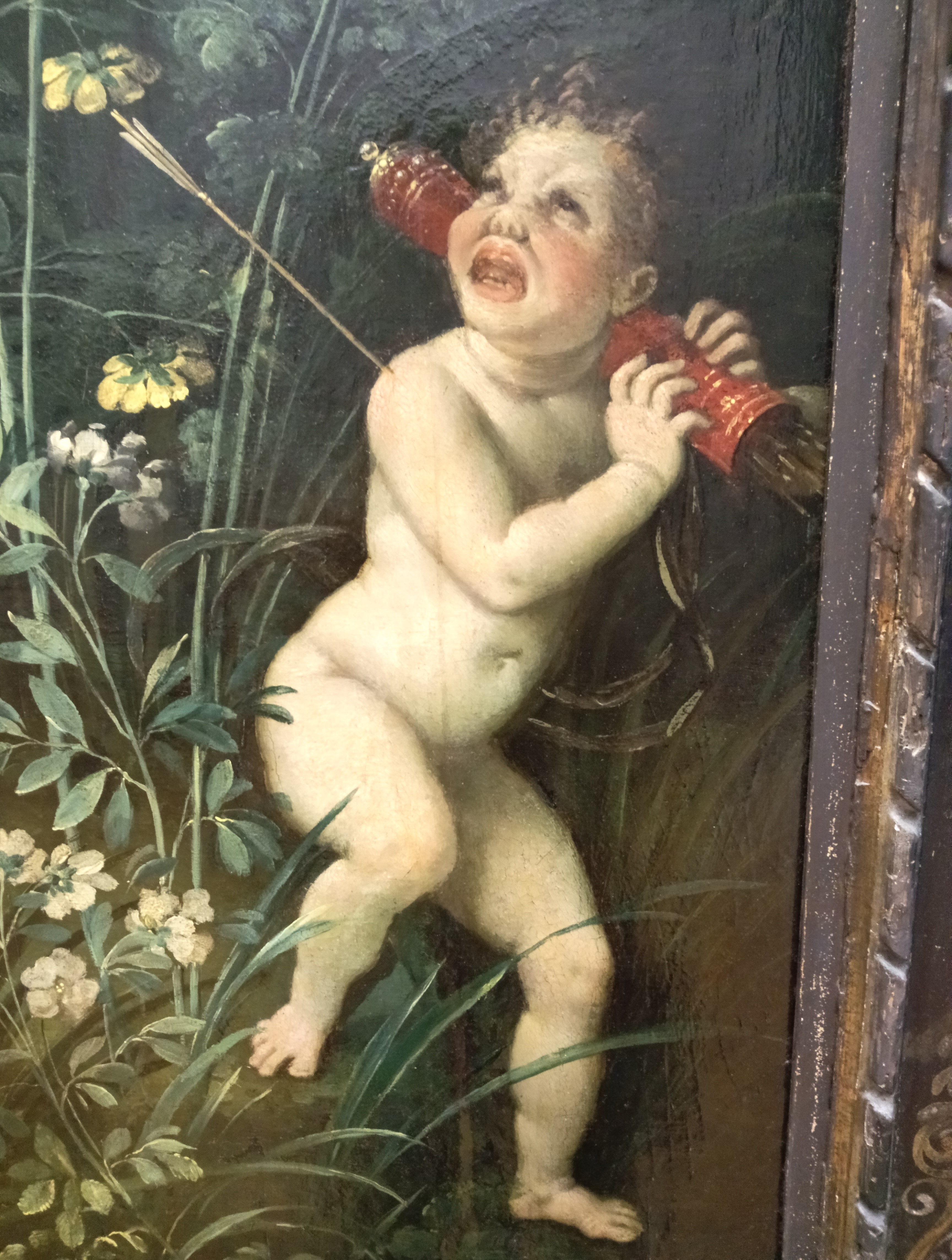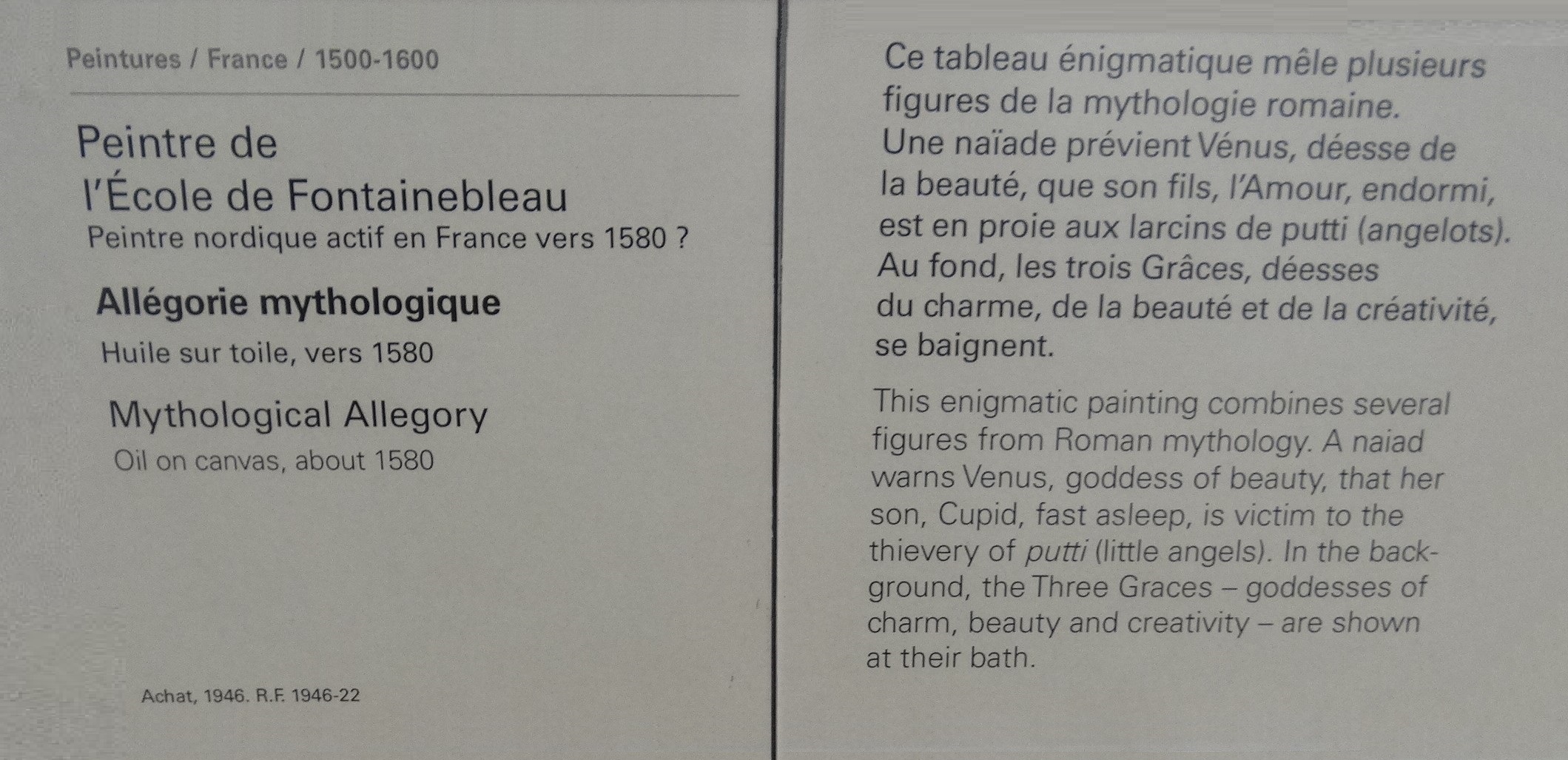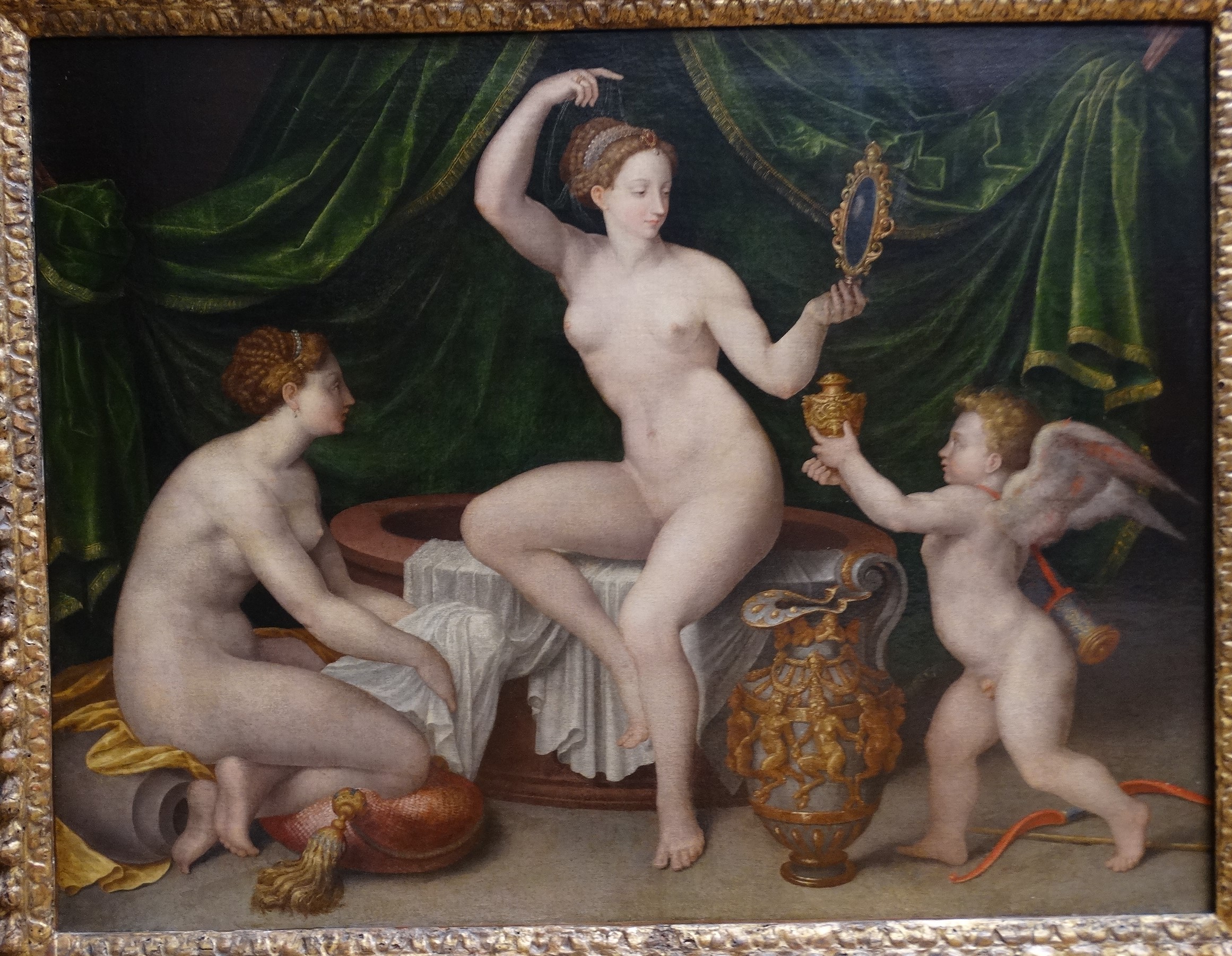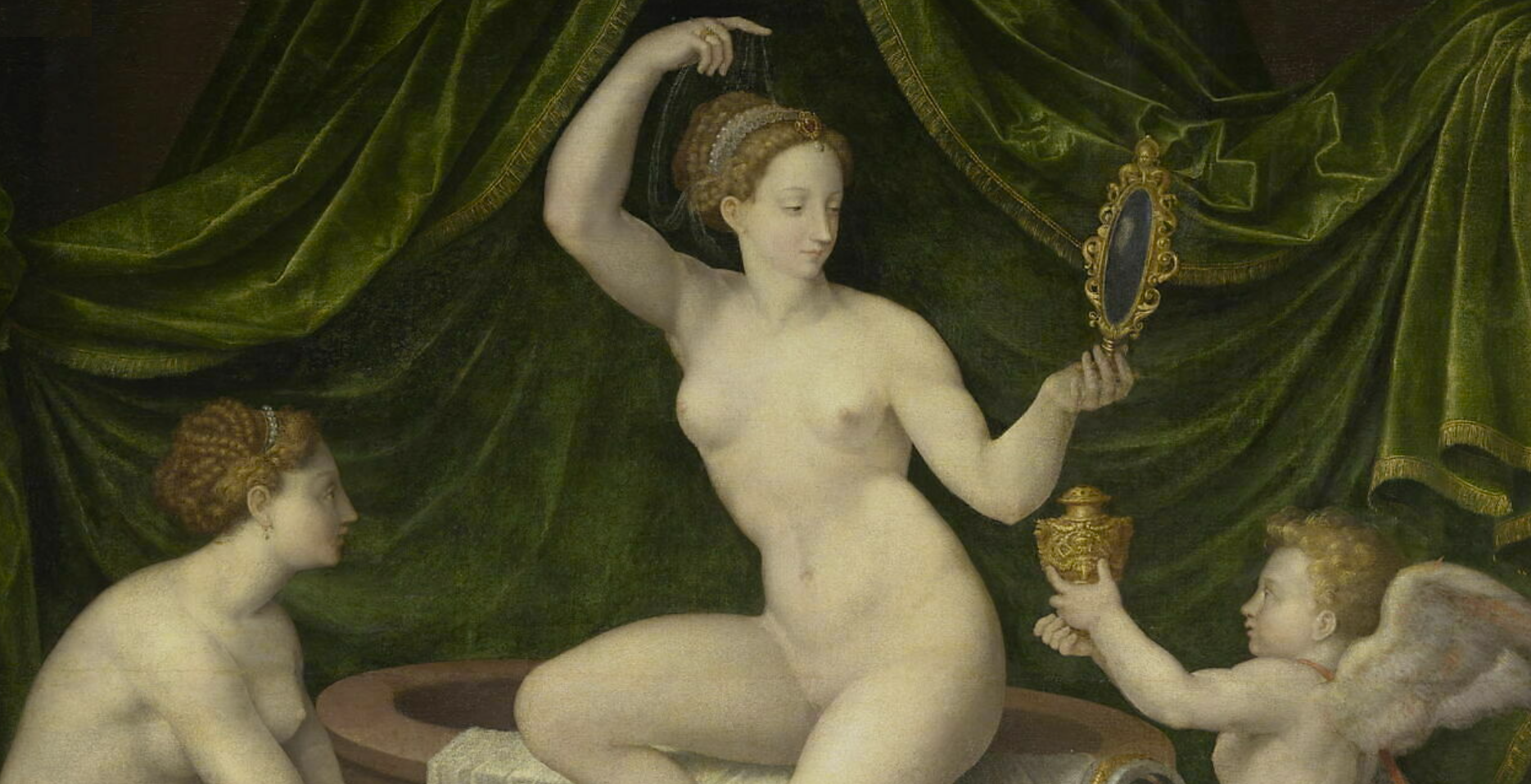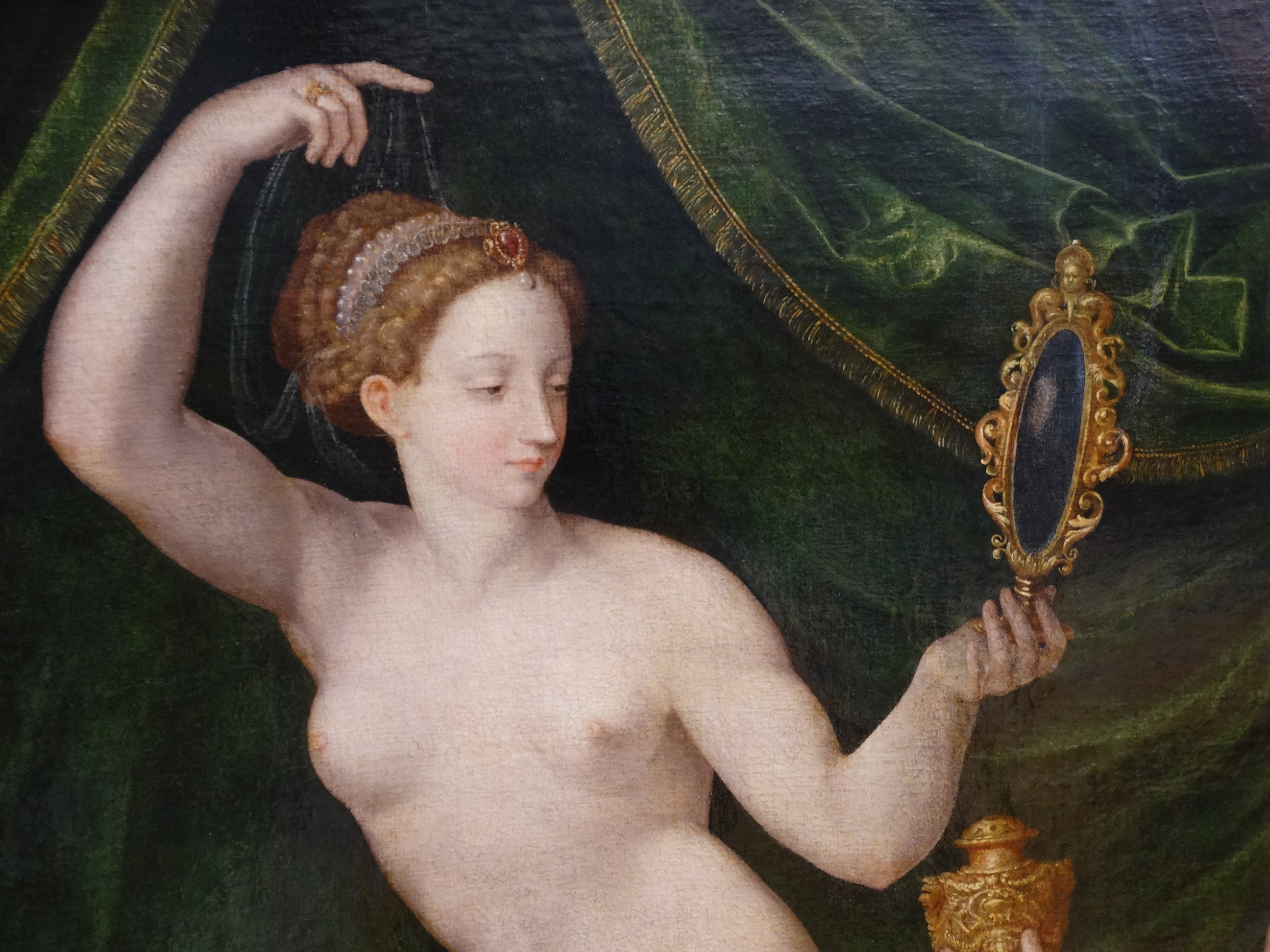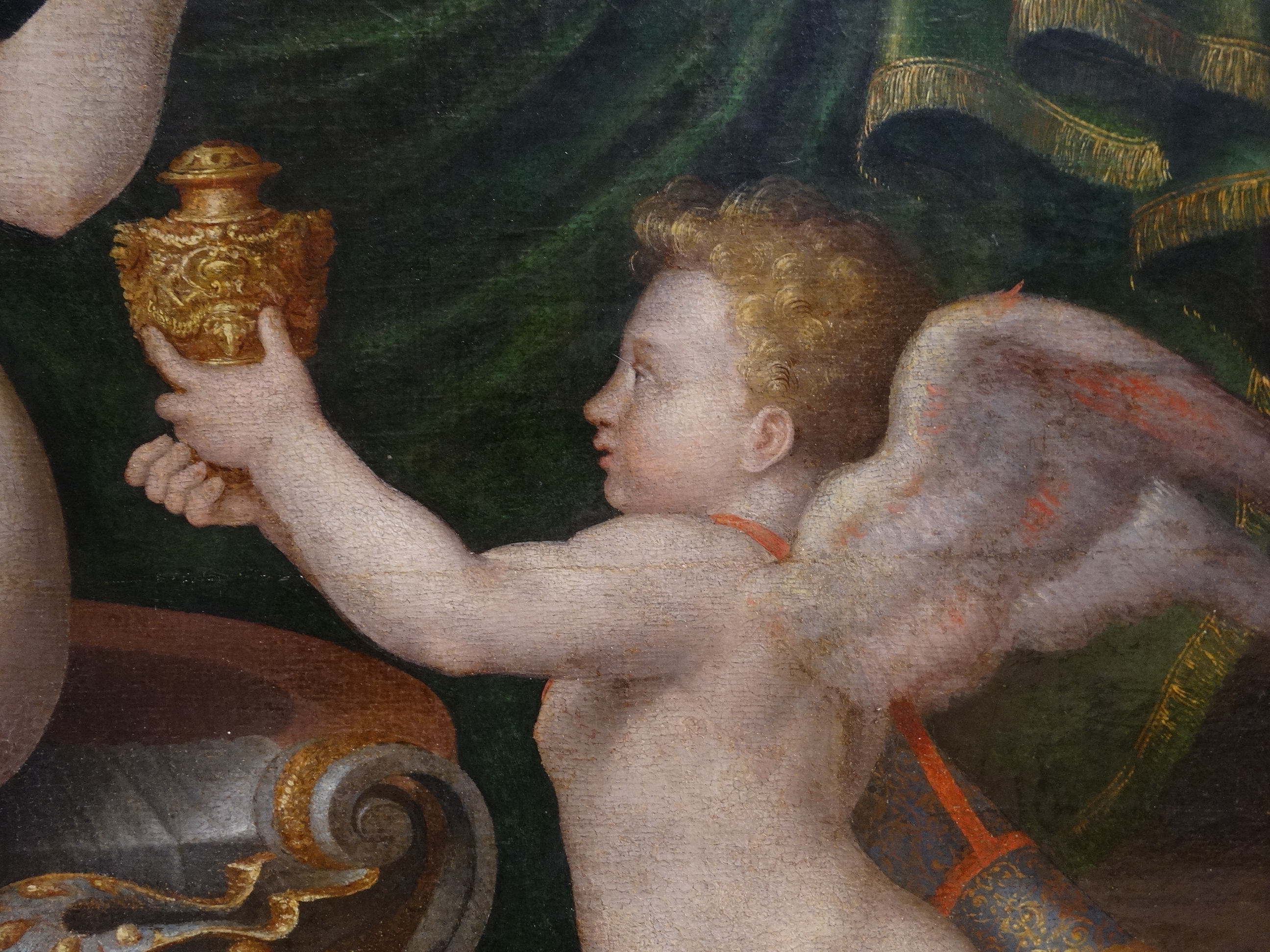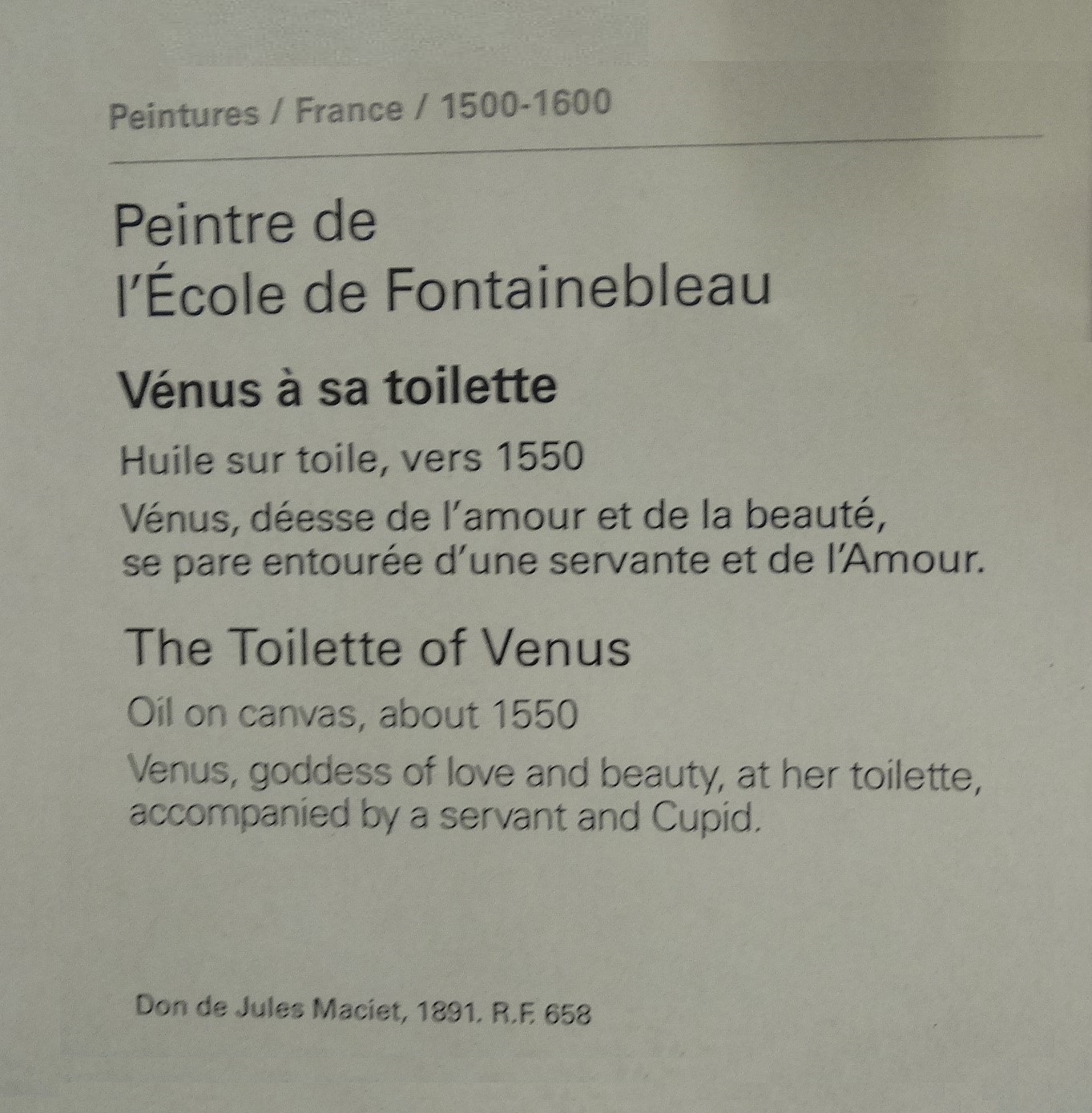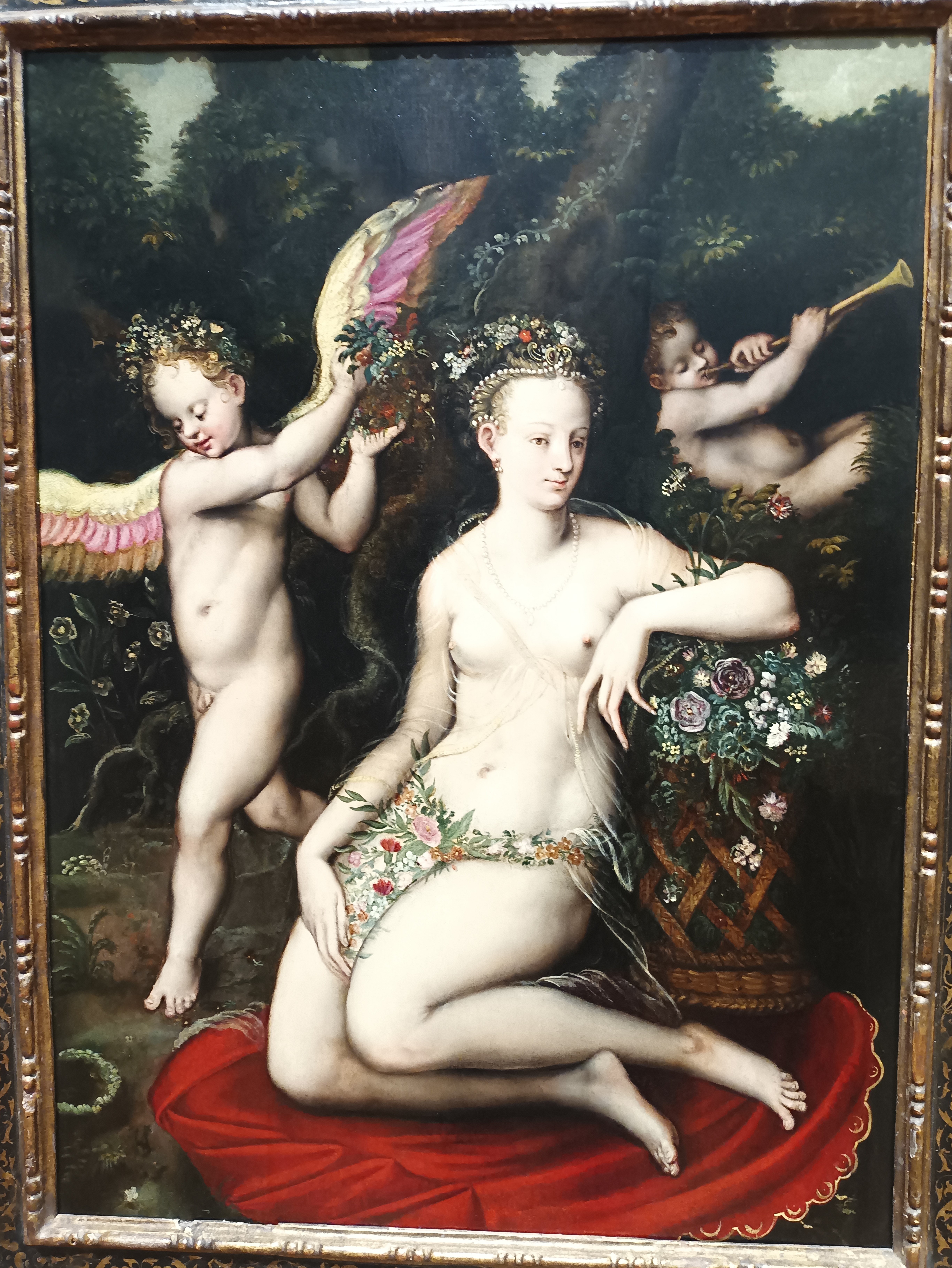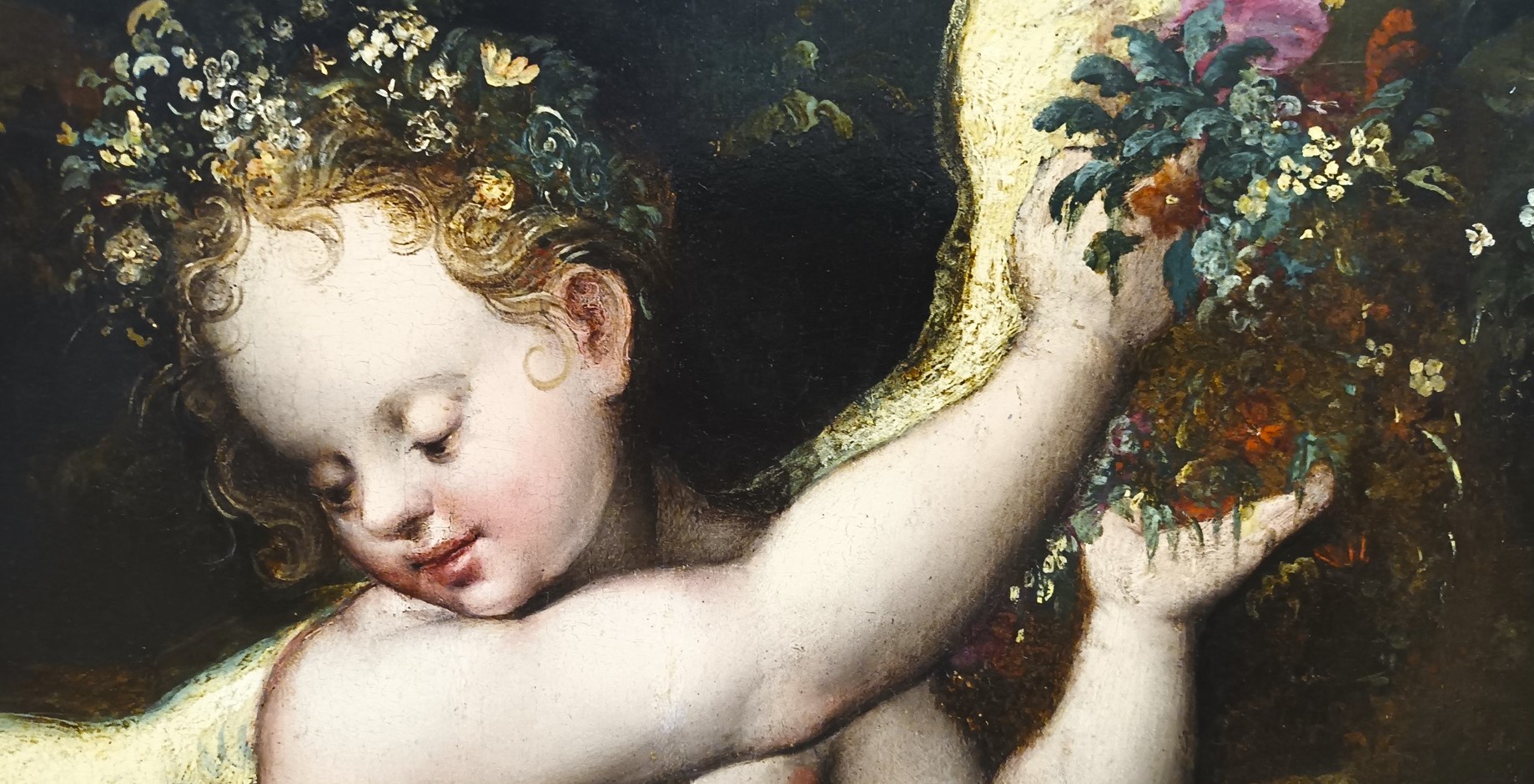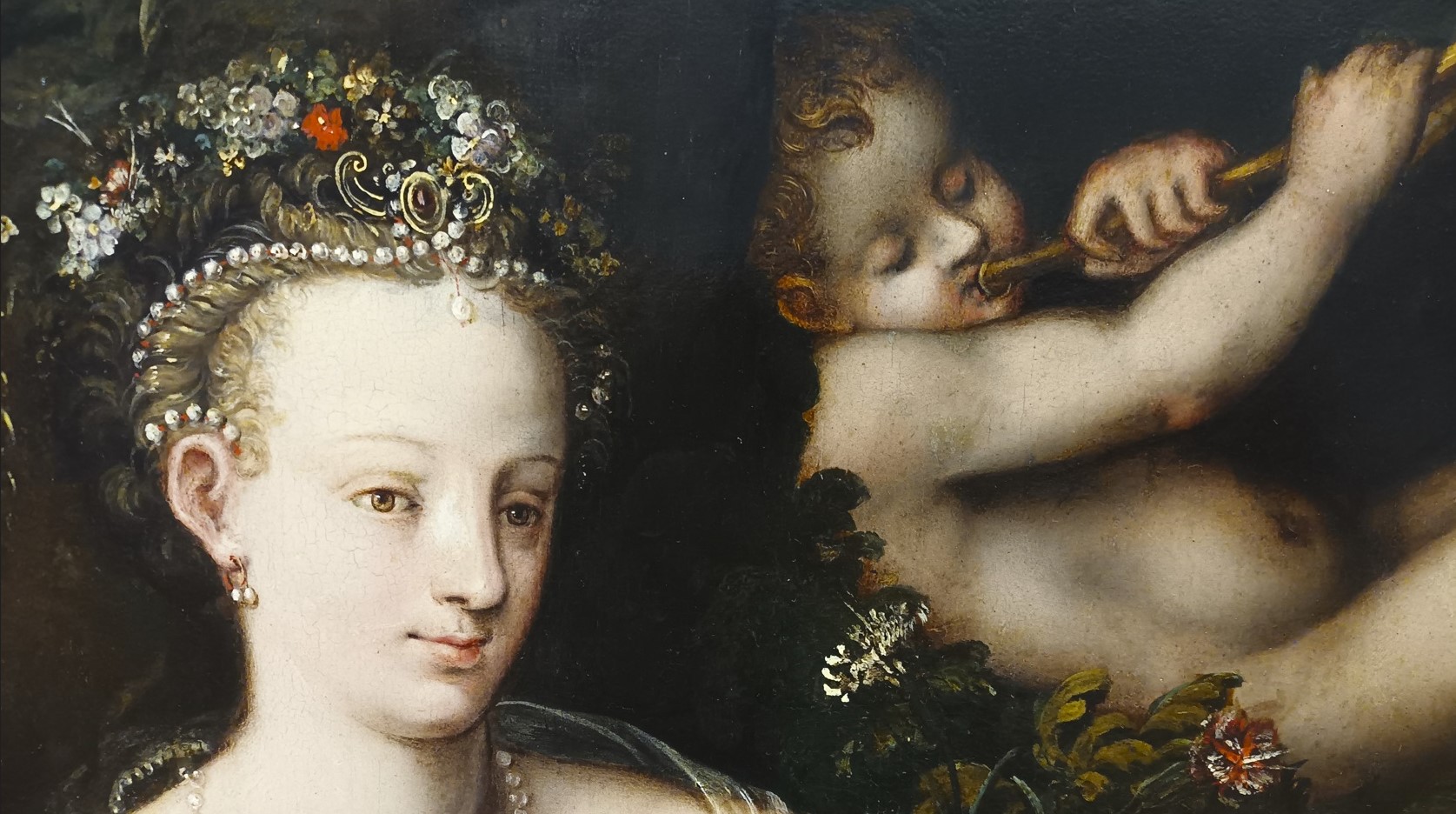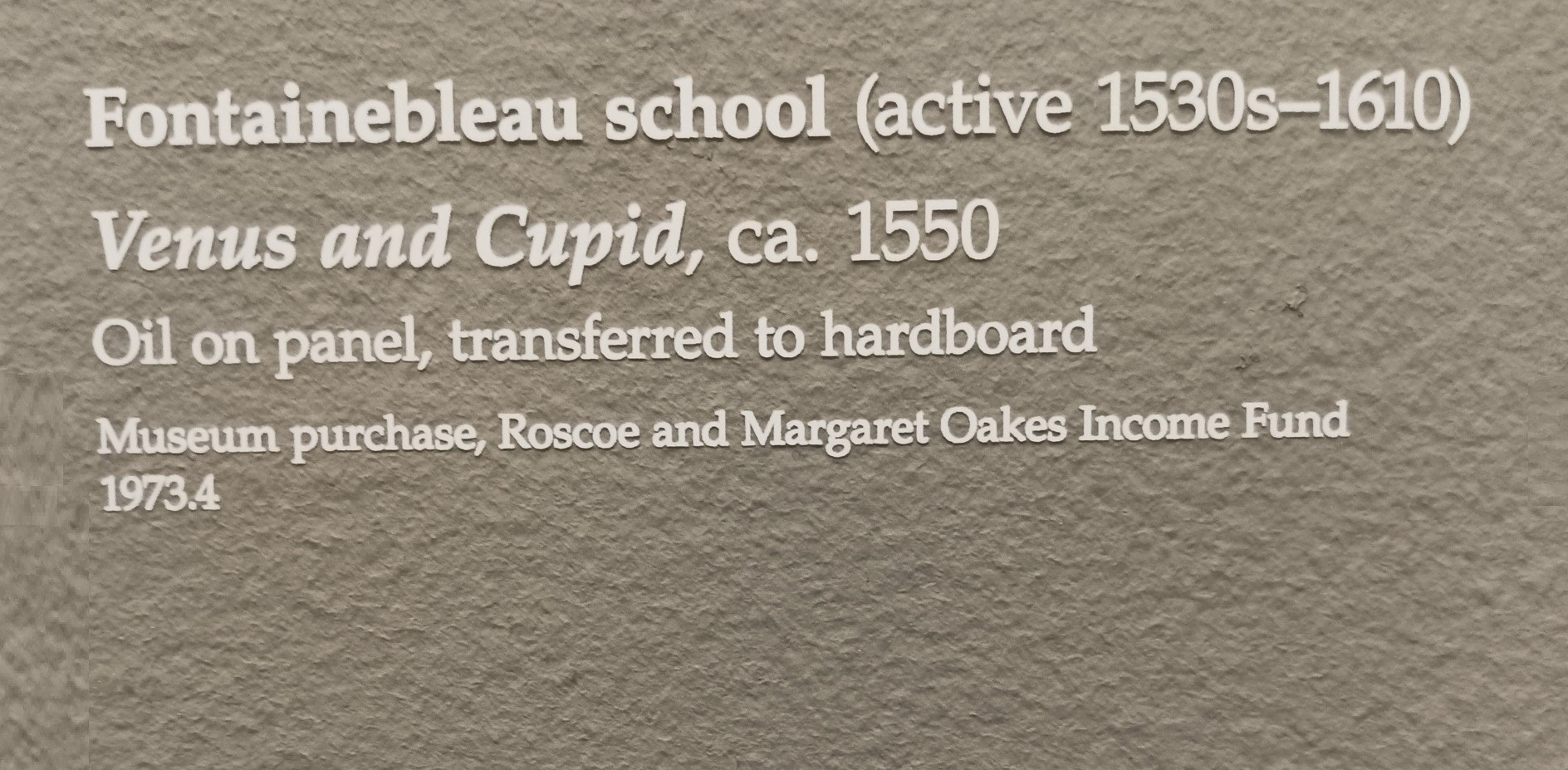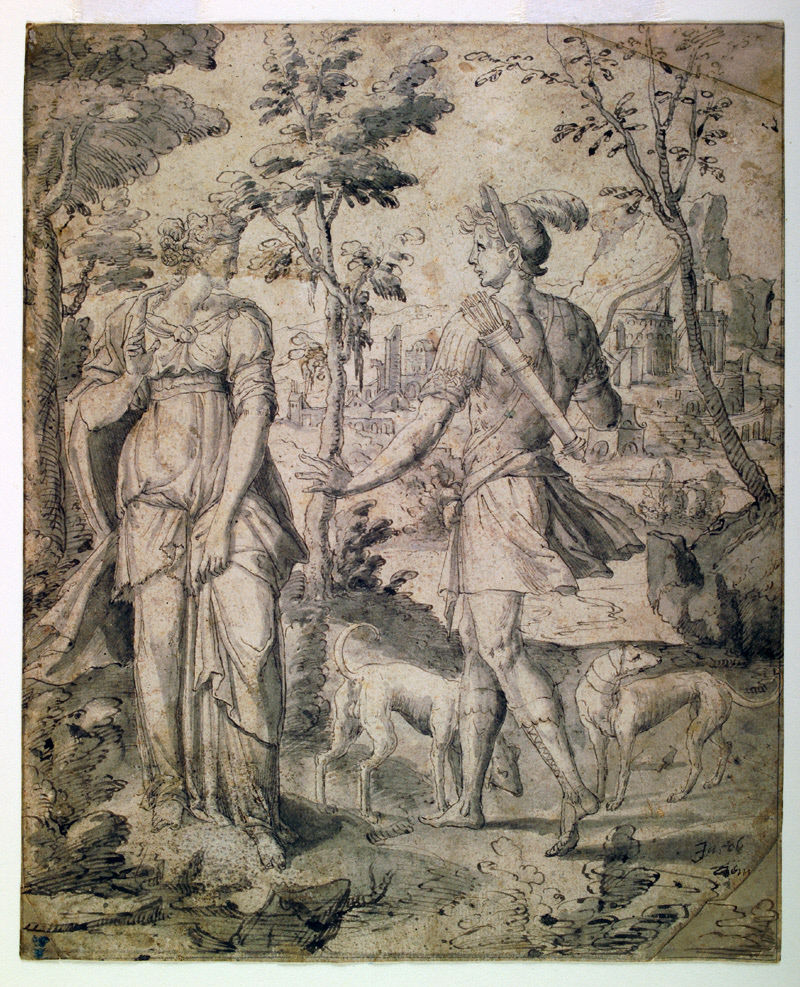 School of Fontainebleau, Esau Meets Rebecca after the Hunt Empty-Handed, 1500s
School of Fontainebleau, Esau Meets Rebecca after the Hunt Empty-Handed, 1500s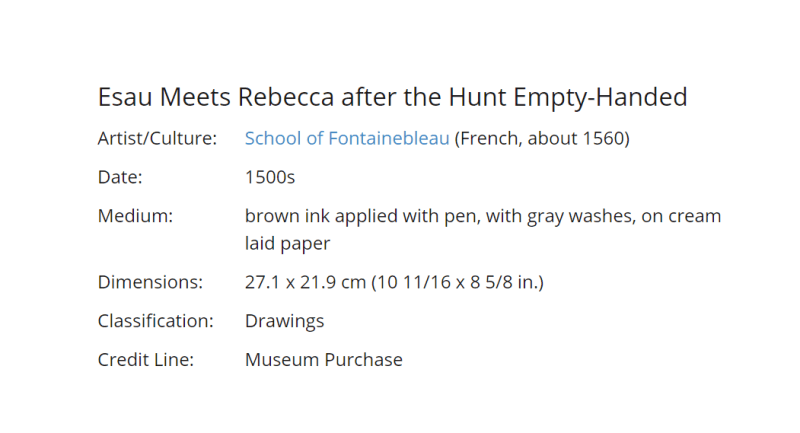 Original, Worcester Art Museum, MA. Visited in 2020.
Original, Worcester Art Museum, MA. Visited in 2020.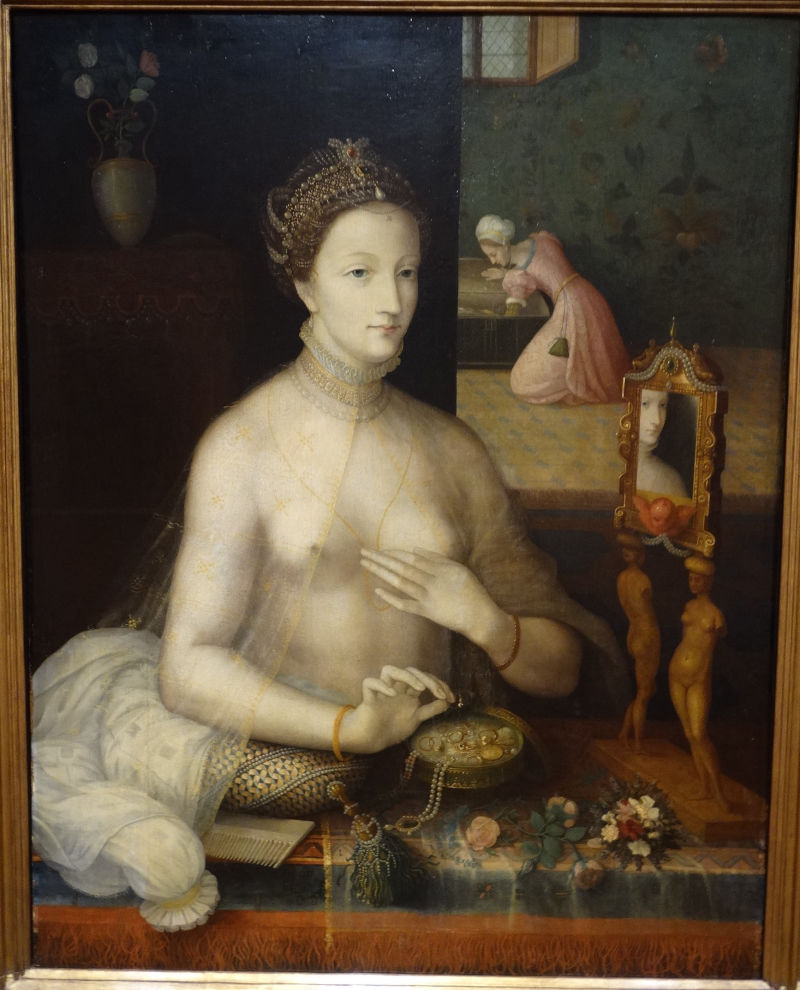 School of Fontainebleau, Woman at Her Toilette, 1550–1570
School of Fontainebleau, Woman at Her Toilette, 1550–1570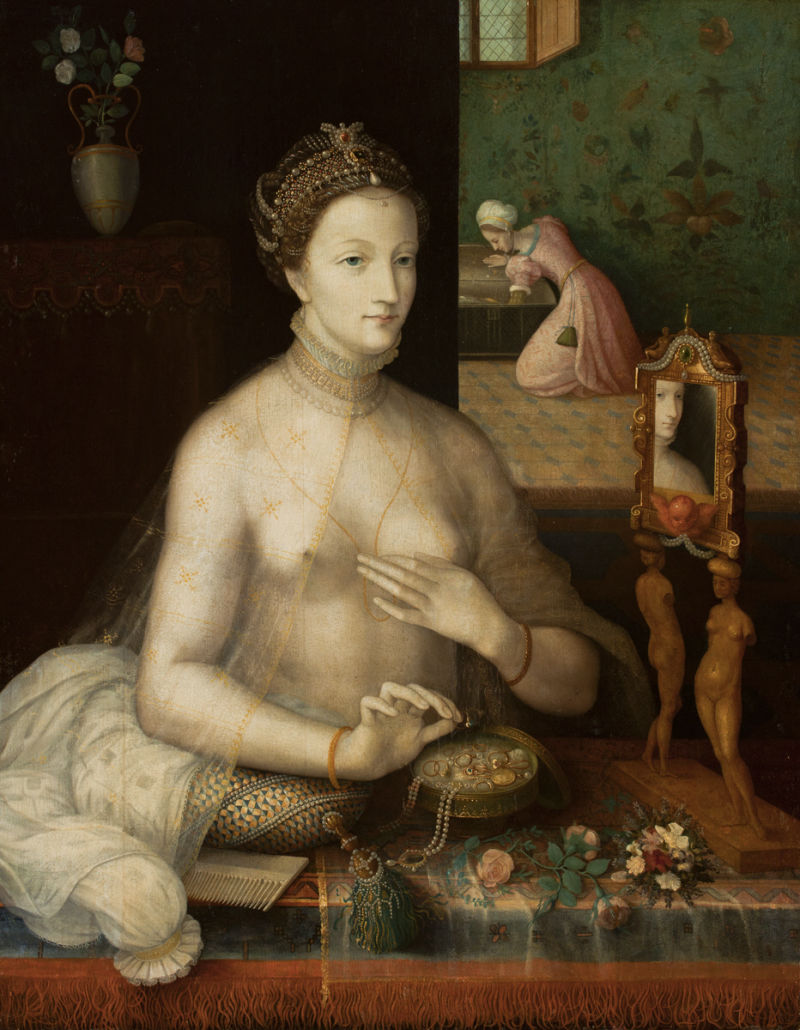 Original, Worcester Art Museum, MA. Visited in 2020.
Original, Worcester Art Museum, MA. Visited in 2020.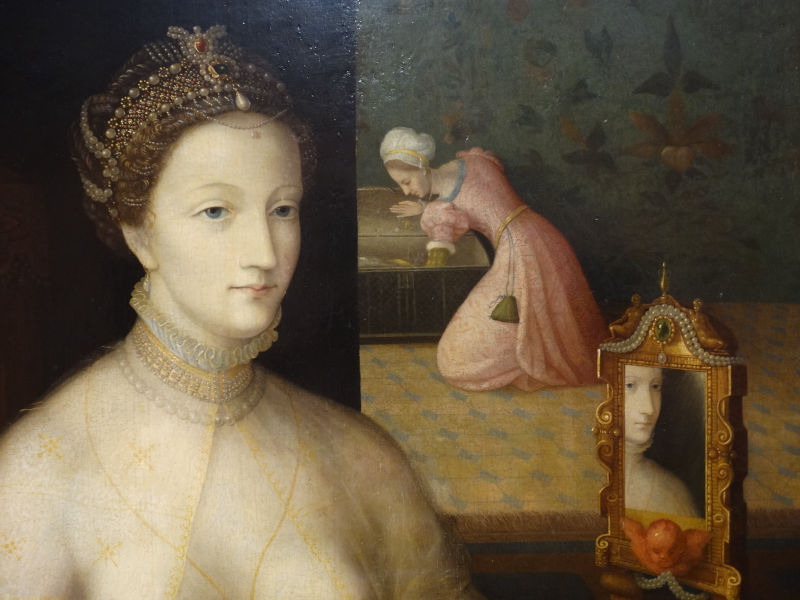 School of Fontainebleau, Woman at Her Toilette, 1550–1570
School of Fontainebleau, Woman at Her Toilette, 1550–1570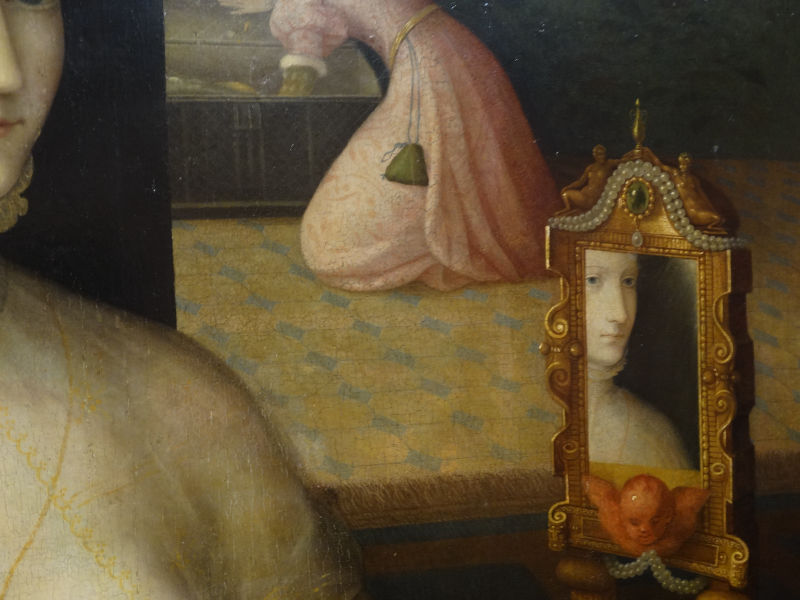 School of Fontainebleau, Woman at Her Toilette, 1550–1570
School of Fontainebleau, Woman at Her Toilette, 1550–1570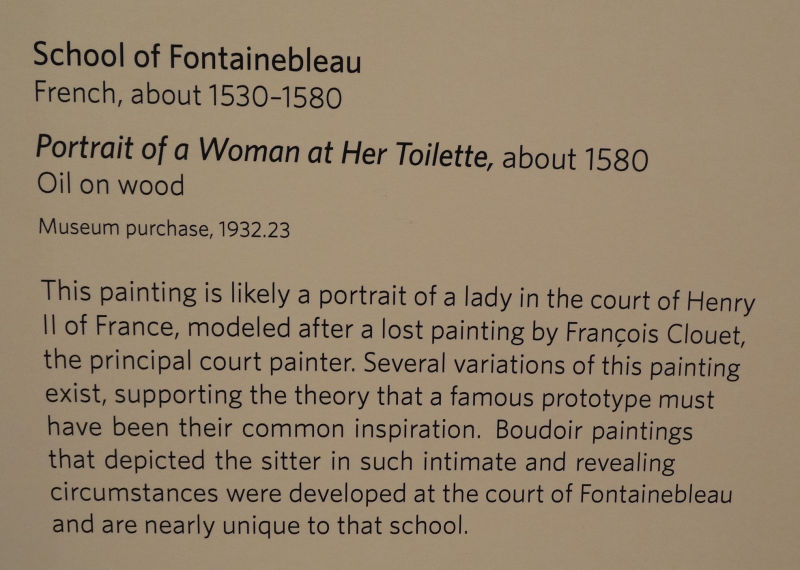 School of Fontainebleau, Woman at Her Toilette, 1550–1570
School of Fontainebleau, Woman at Her Toilette, 1550–1570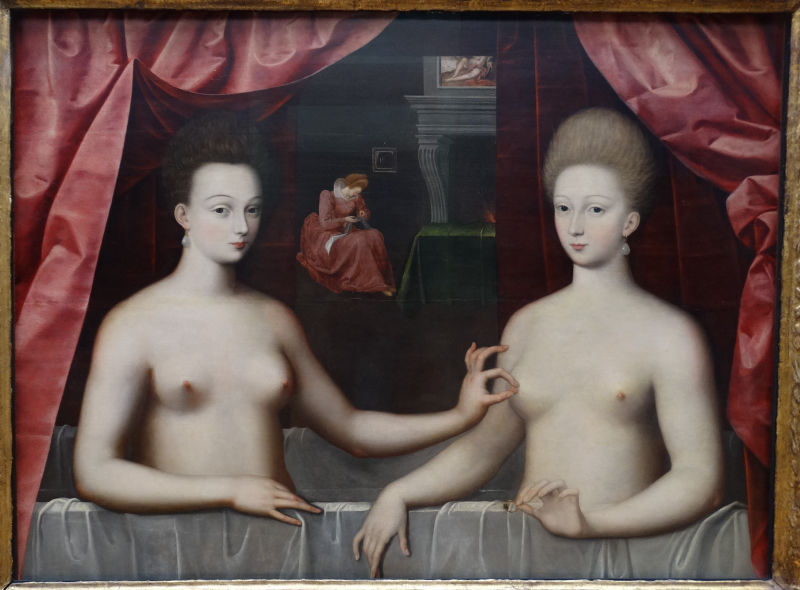 School of Fontainebleau, Gabrielle d'Estrées and one of her sisters, about 1594
School of Fontainebleau, Gabrielle d'Estrées and one of her sisters, about 1594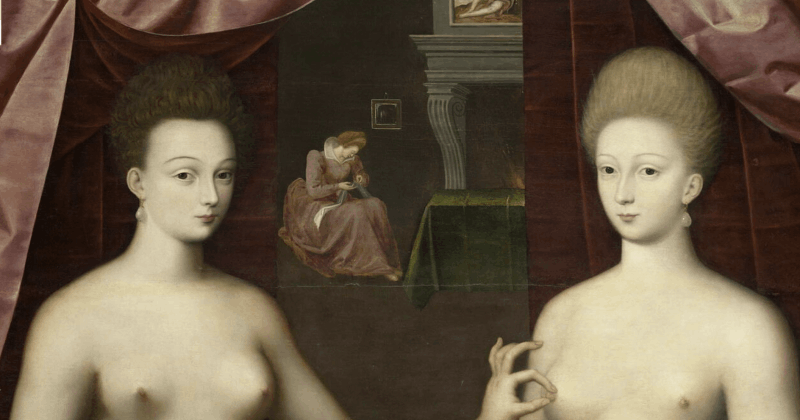
Original, Louvre Museum, Paris. Visited in 2021.
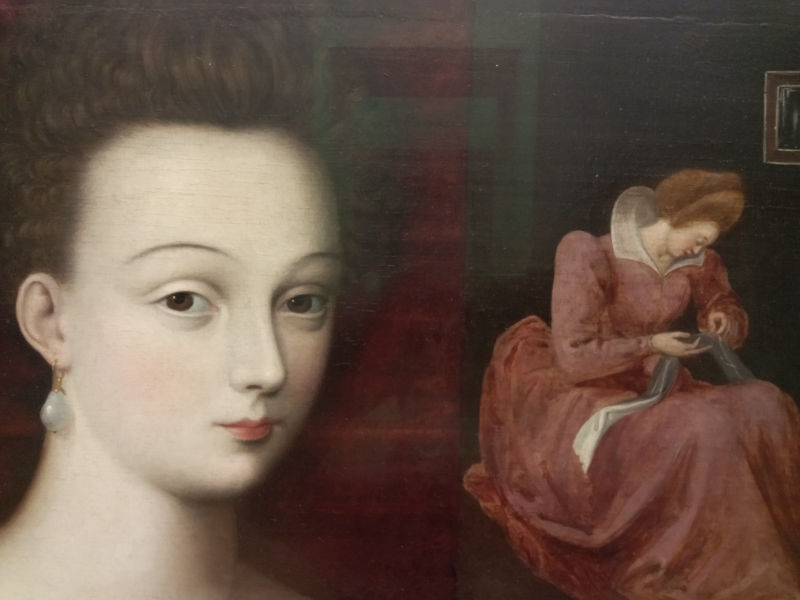 School of Fontainebleau, Gabrielle d'Estrées and one of her sisters, about 1594
School of Fontainebleau, Gabrielle d'Estrées and one of her sisters, about 1594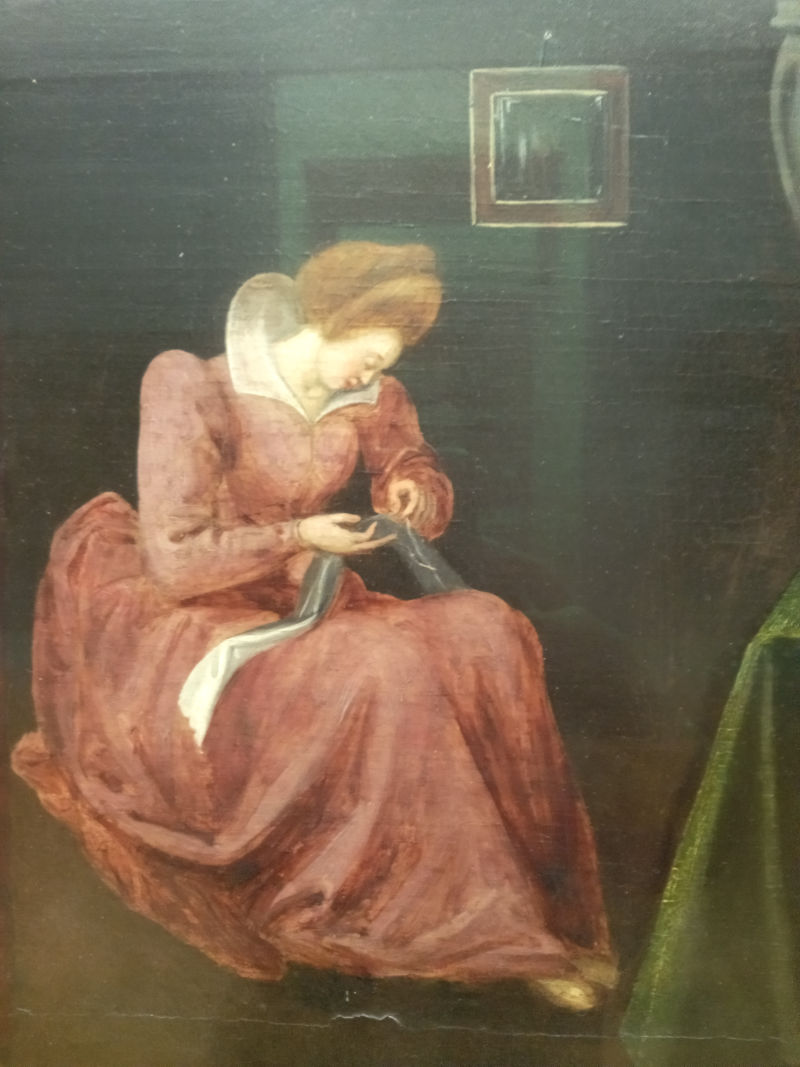 School of Fontainebleau, Gabrielle d'Estrées and one of her sisters, about 1594
School of Fontainebleau, Gabrielle d'Estrées and one of her sisters, about 1594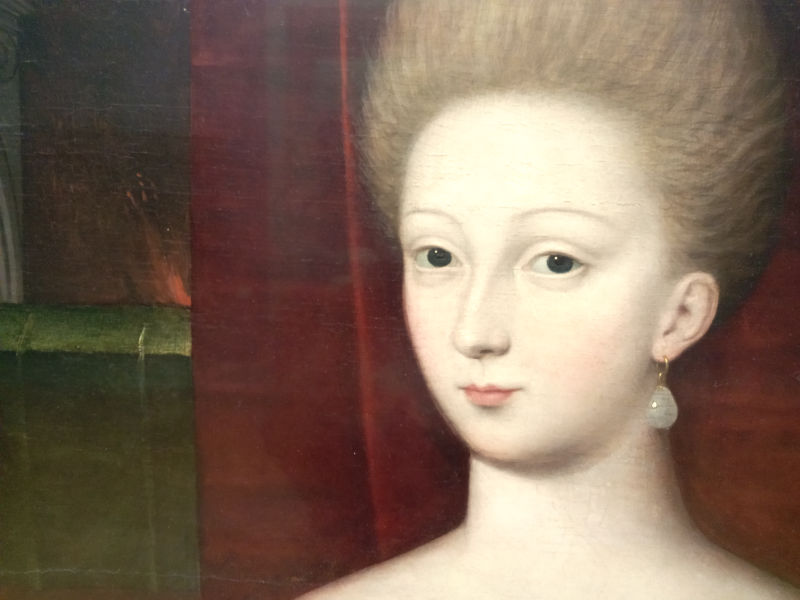 School of Fontainebleau, Gabrielle d'Estrées and one of her sisters, about 1594
School of Fontainebleau, Gabrielle d'Estrées and one of her sisters, about 1594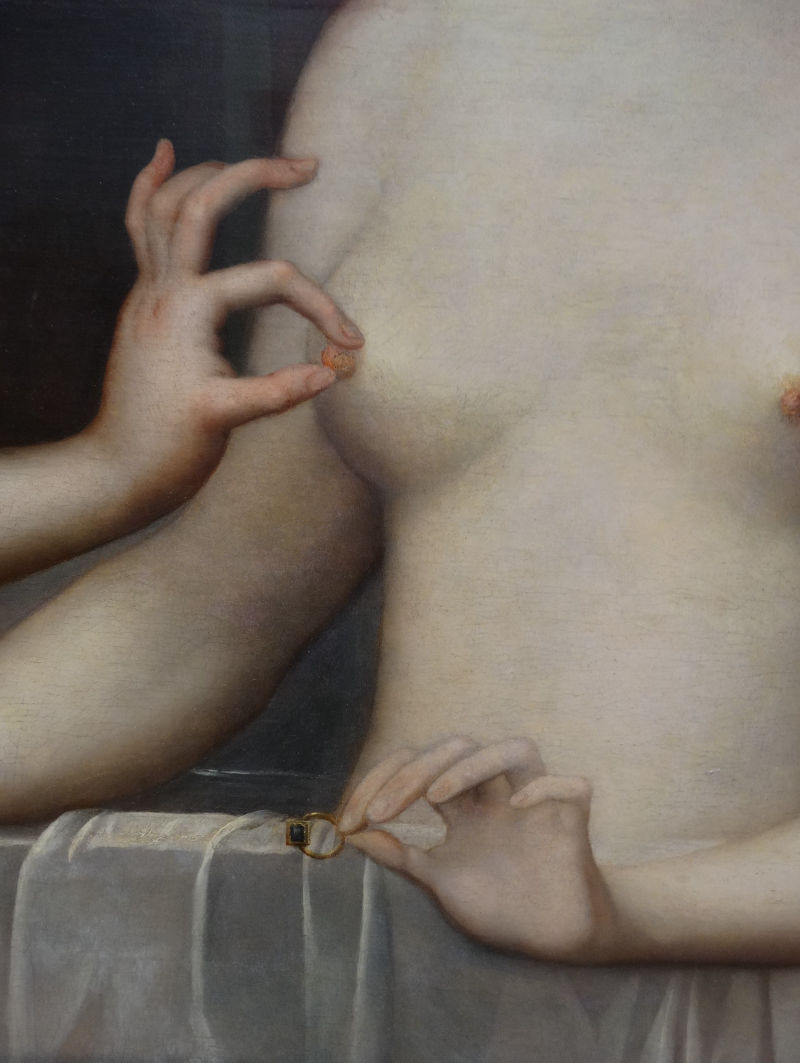 School of Fontainebleau, Gabrielle d'Estrées and one of her sisters, about 1594
School of Fontainebleau, Gabrielle d'Estrées and one of her sisters, about 1594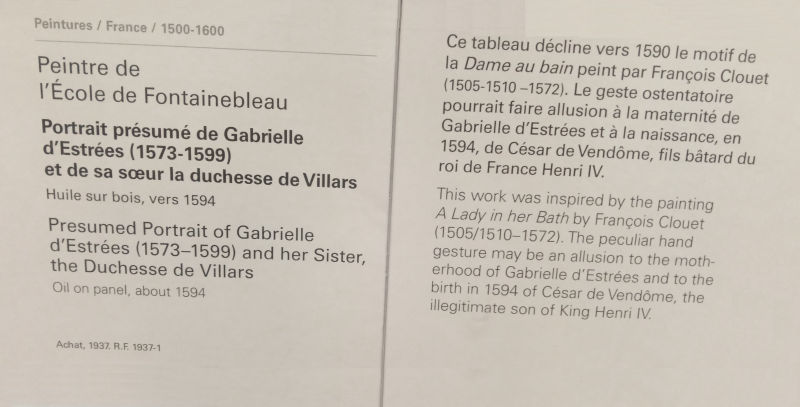 School of Fontainebleau, Gabrielle d'Estrées and one of her sisters, about 1594
School of Fontainebleau, Gabrielle d'Estrées and one of her sisters, about 1594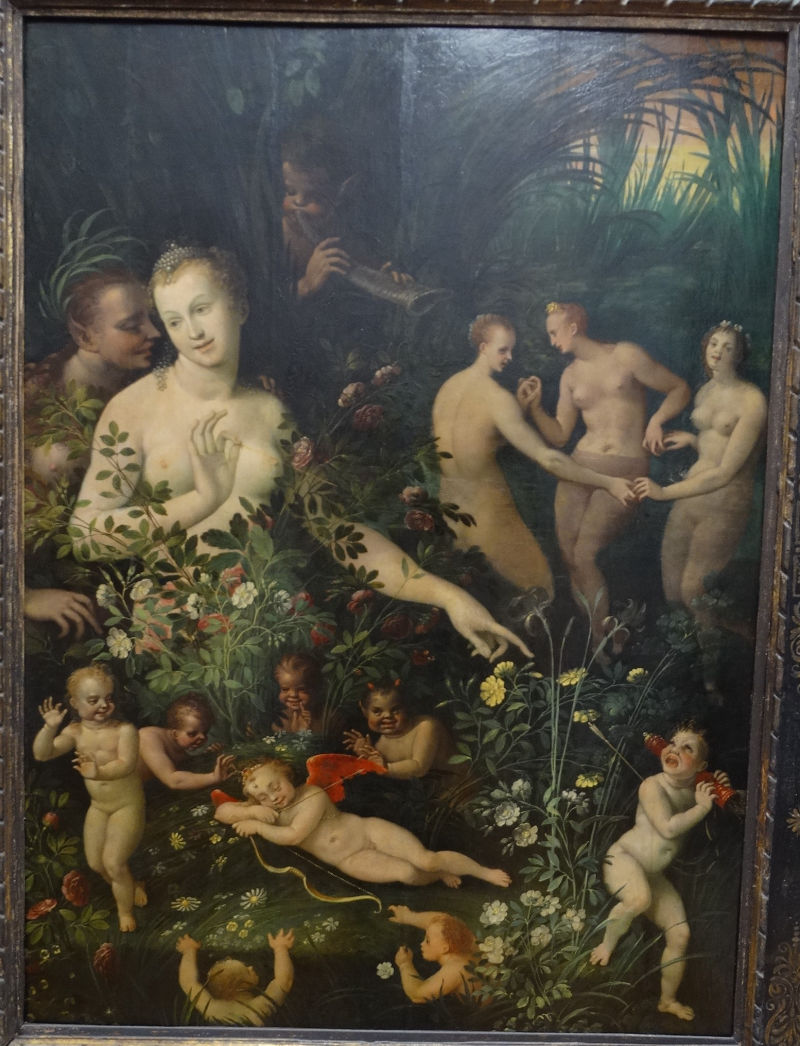 School of Fontainebleau, L`Ecole de fontainbleau, Mythological Allegory, about 1580
School of Fontainebleau, L`Ecole de fontainbleau, Mythological Allegory, about 1580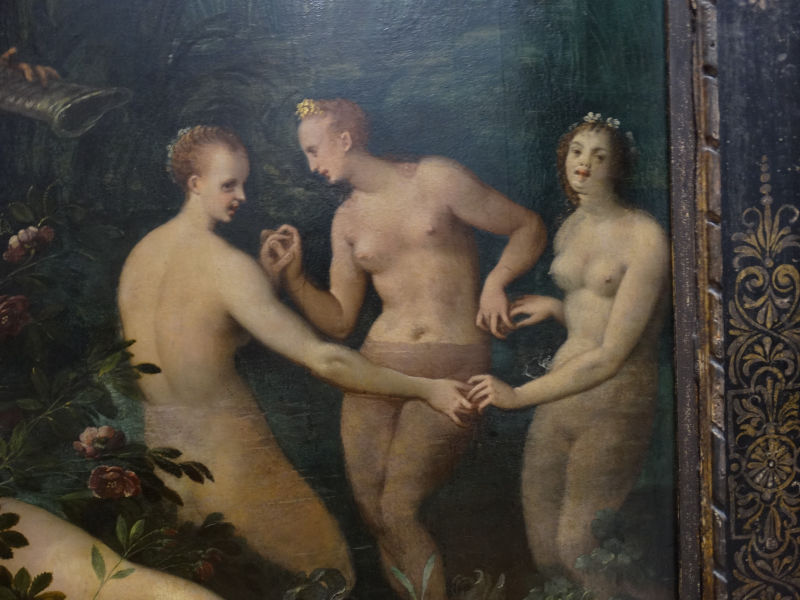 Original, Louvre Museum, Paris. Visited in 2021.
Original, Louvre Museum, Paris. Visited in 2021.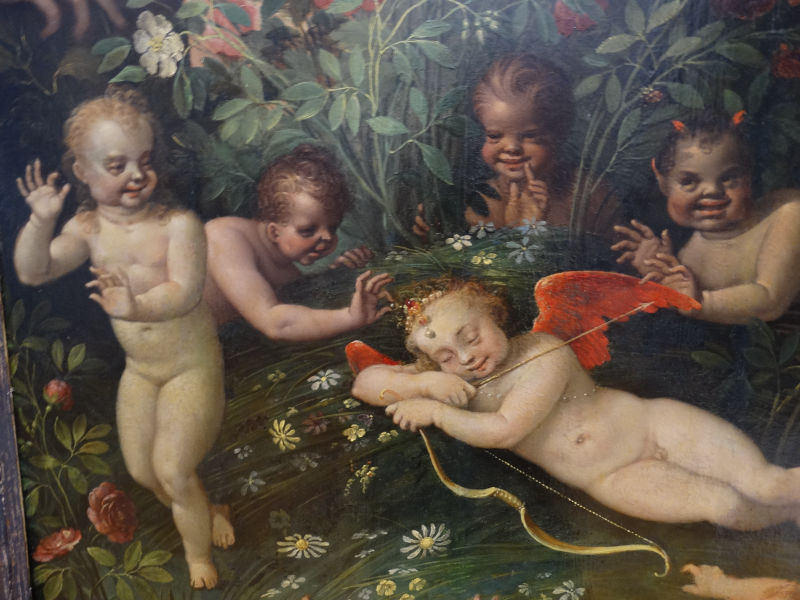 School of Fontainebleau, L`Ecole de fontainbleau, Mythological Allegory, about 1580
School of Fontainebleau, L`Ecole de fontainbleau, Mythological Allegory, about 1580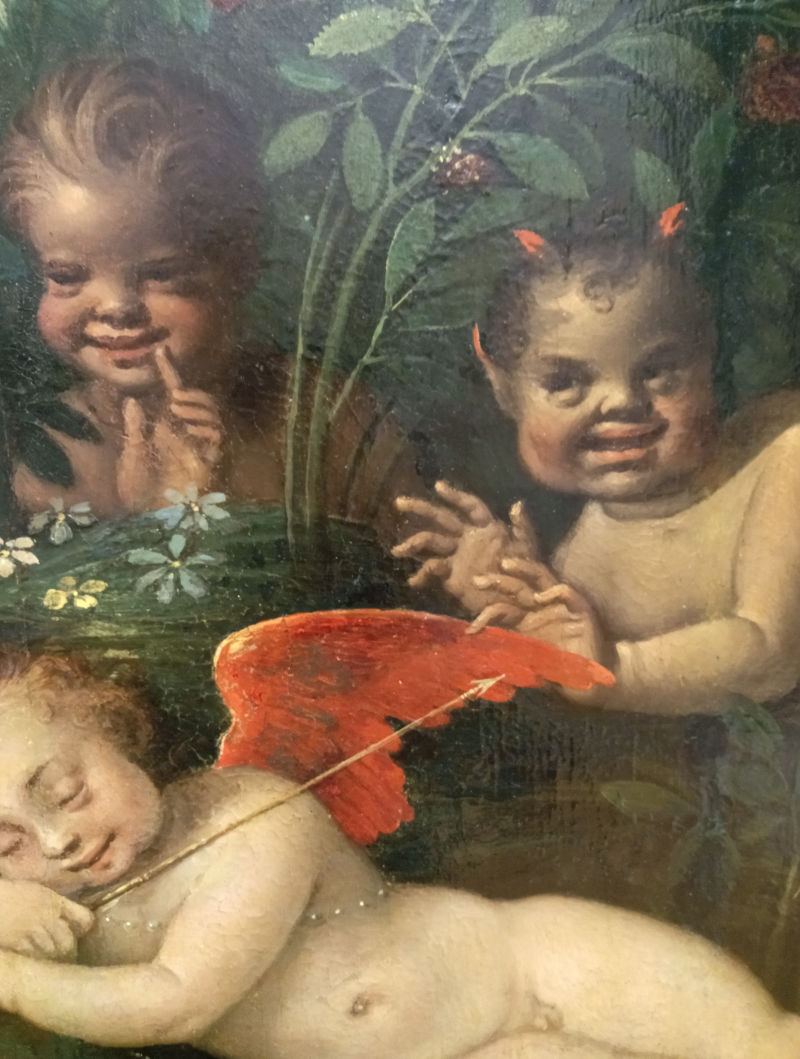 School of Fontainebleau, L`Ecole de fontainbleau, Mythological Allegory, about 1580
School of Fontainebleau, L`Ecole de fontainbleau, Mythological Allegory, about 1580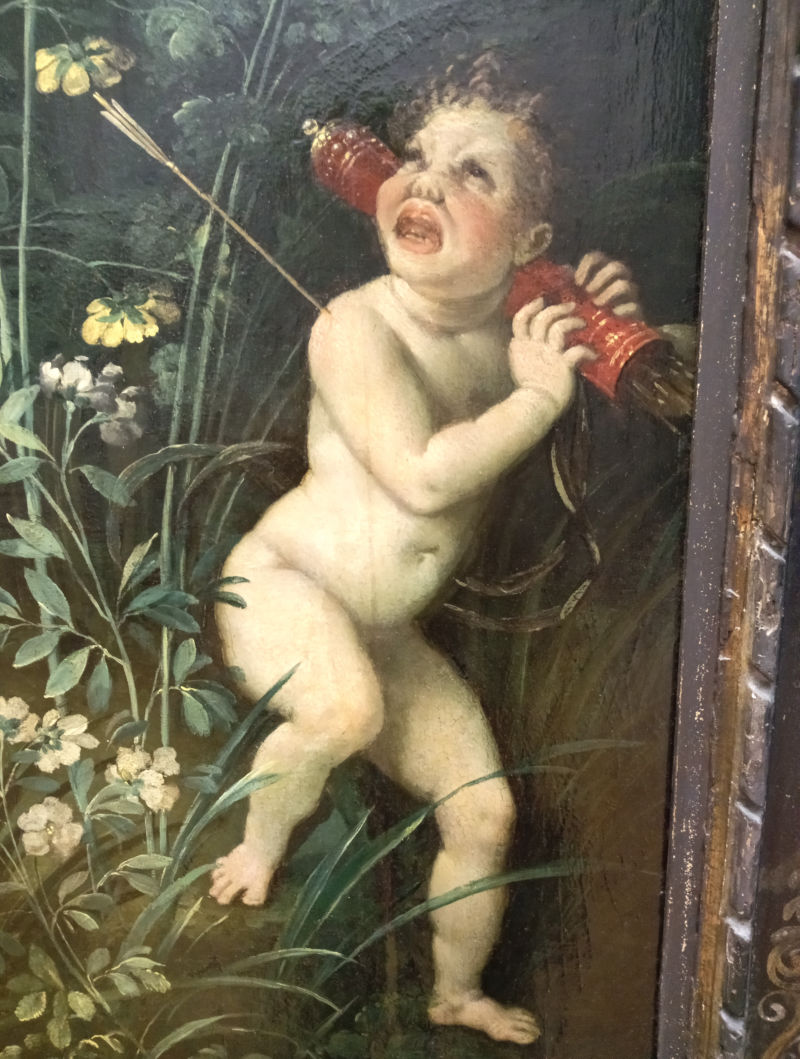 School of Fontainebleau, L`Ecole de fontainbleau, Mythological Allegory, about 1580
School of Fontainebleau, L`Ecole de fontainbleau, Mythological Allegory, about 1580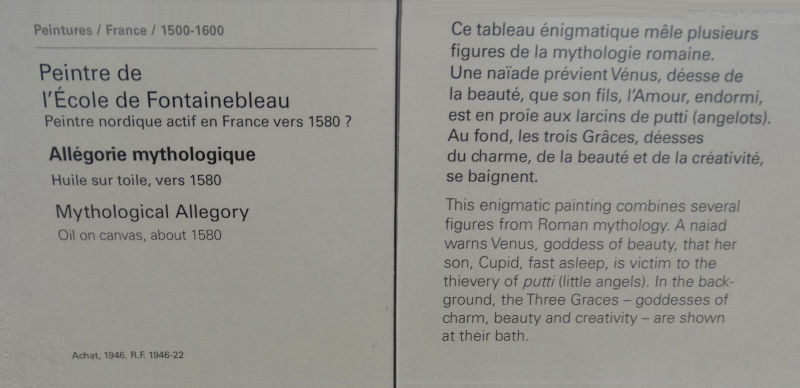 School of Fontainebleau, L`Ecole de fontainbleau, Mythological Allegory, about 1580
School of Fontainebleau, L`Ecole de fontainbleau, Mythological Allegory, about 1580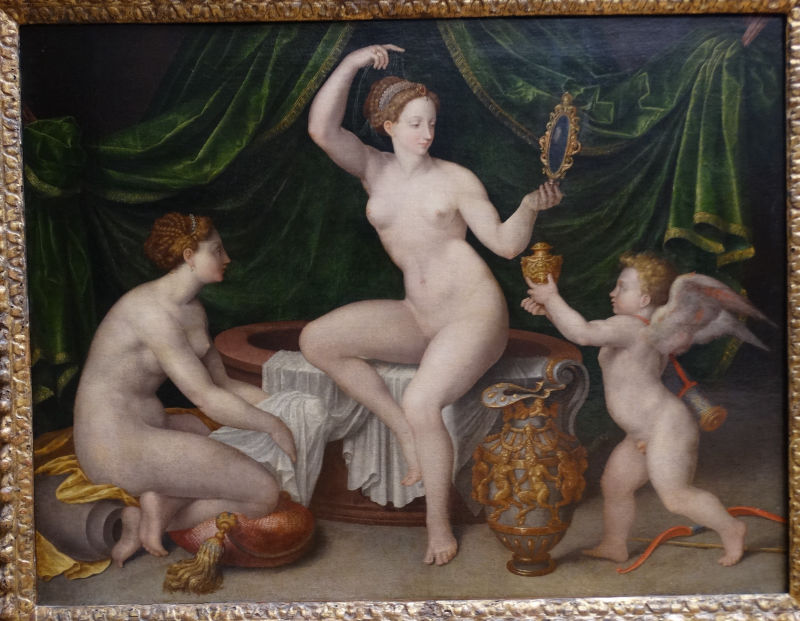 School of Fontainebleau, Venus at her toilet, about 1550
School of Fontainebleau, Venus at her toilet, about 1550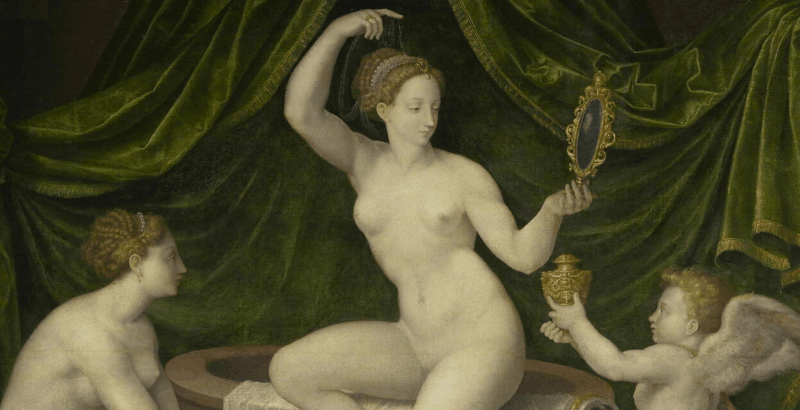 Original, Louvre Museum, Paris. Visited in 2021.
Original, Louvre Museum, Paris. Visited in 2021.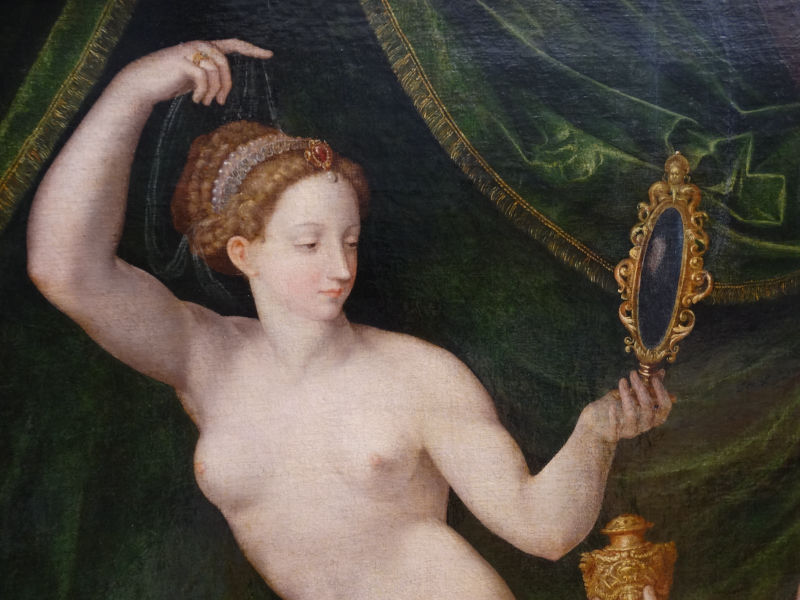 School of Fontainebleau, Venus at her toilet, about 1550
School of Fontainebleau, Venus at her toilet, about 1550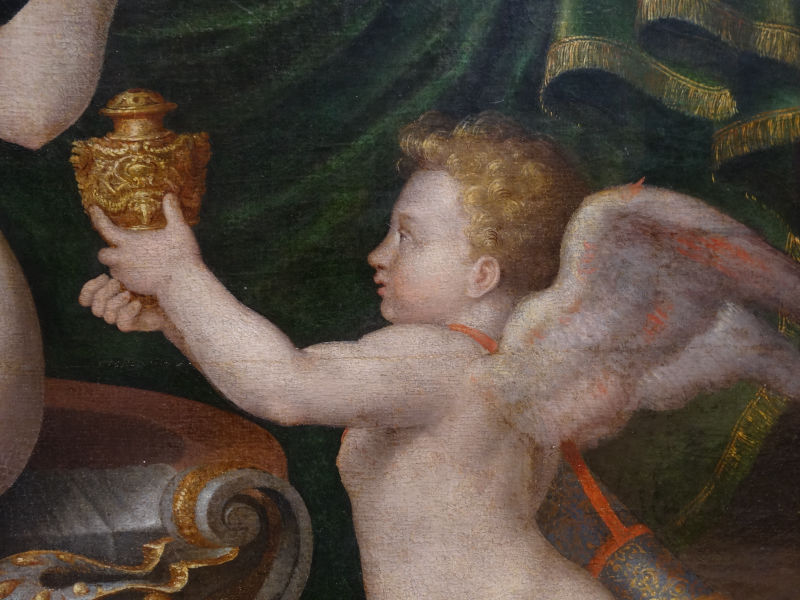 School of Fontainebleau, Venus at her toilet, about 1550
School of Fontainebleau, Venus at her toilet, about 1550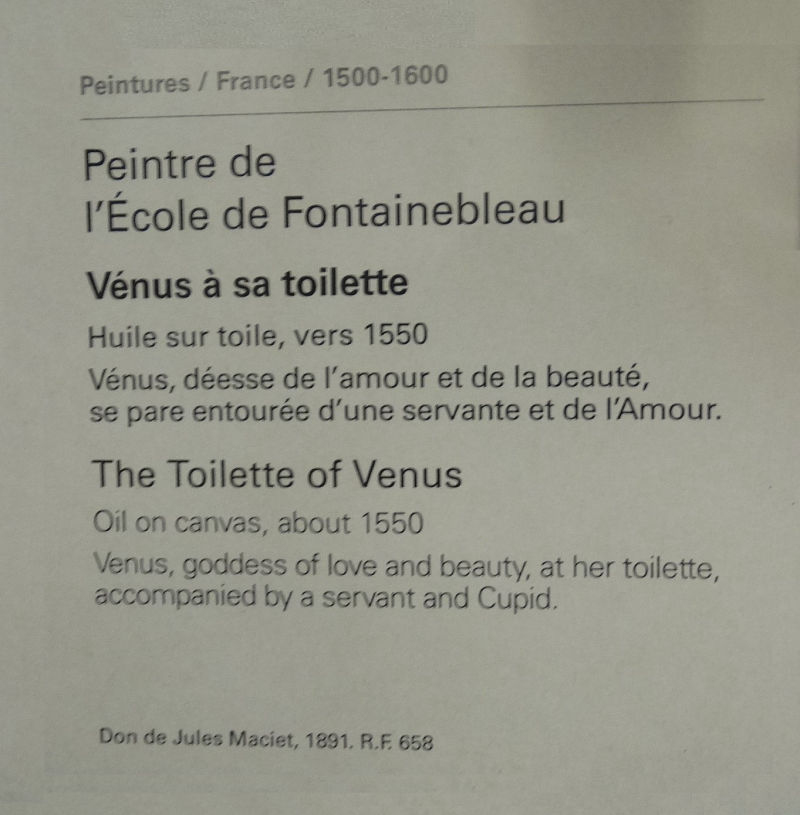 School of Fontainebleau, Venus at her toilet, about 1550
School of Fontainebleau, Venus at her toilet, about 1550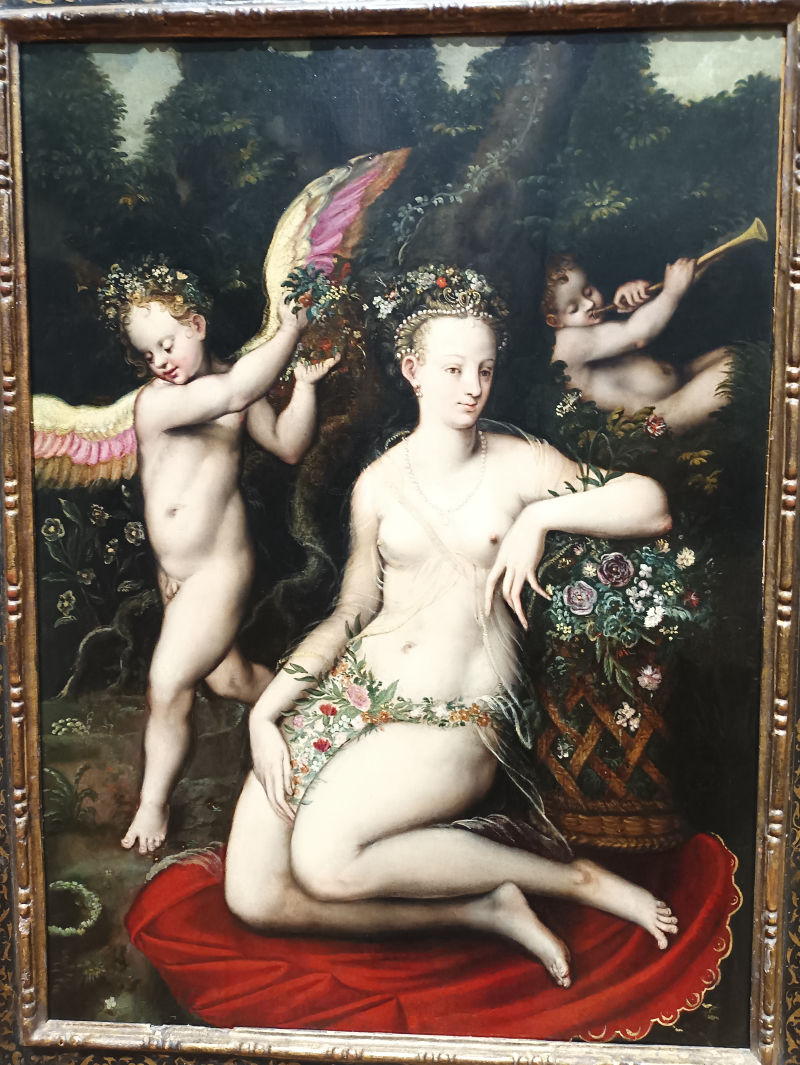 School of Fontainebleau, Venus and Cupid, ca. 1550
School of Fontainebleau, Venus and Cupid, ca. 1550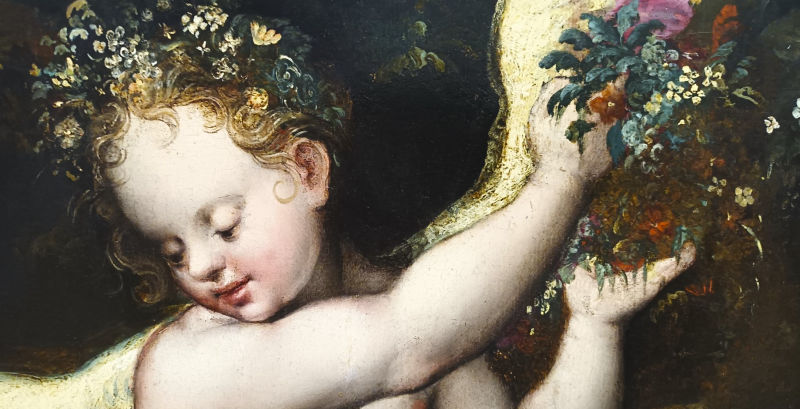
Original, Legion of Honor, Fine Arts Museums of San Francisco. Visited in 2022.
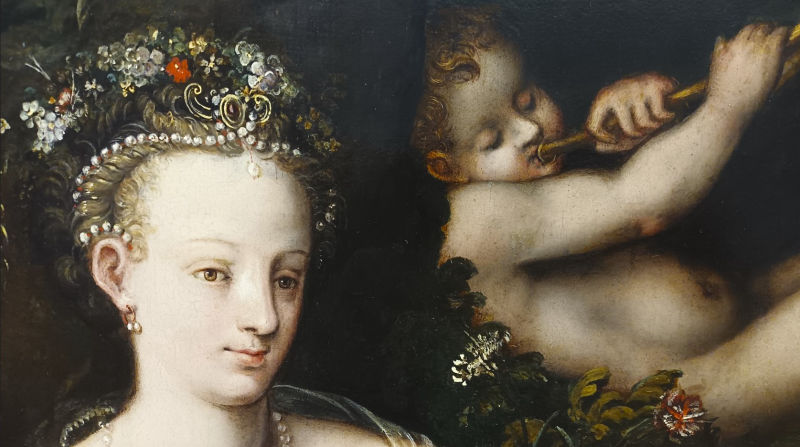 School of Fontainebleau, Venus and Cupid, ca. 1550
School of Fontainebleau, Venus and Cupid, ca. 1550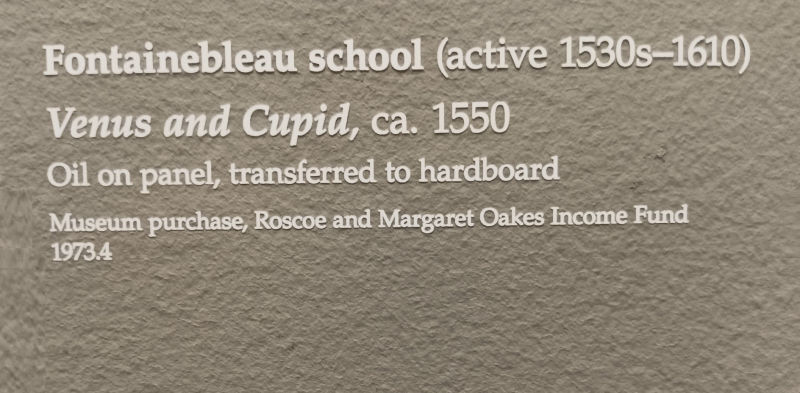 School of Fontainebleau, Venus and Cupid, ca. 1550
School of Fontainebleau, Venus and Cupid, ca. 1550